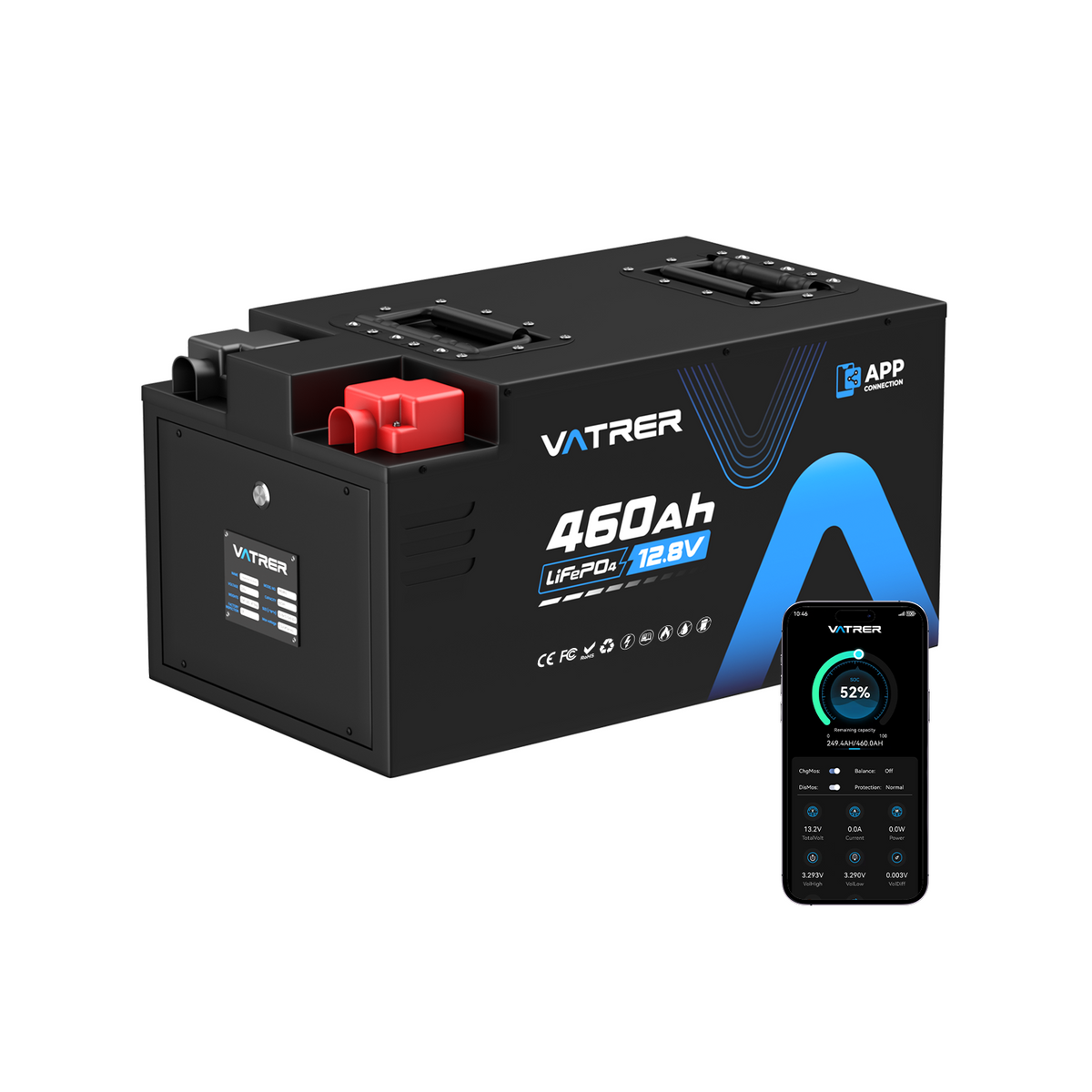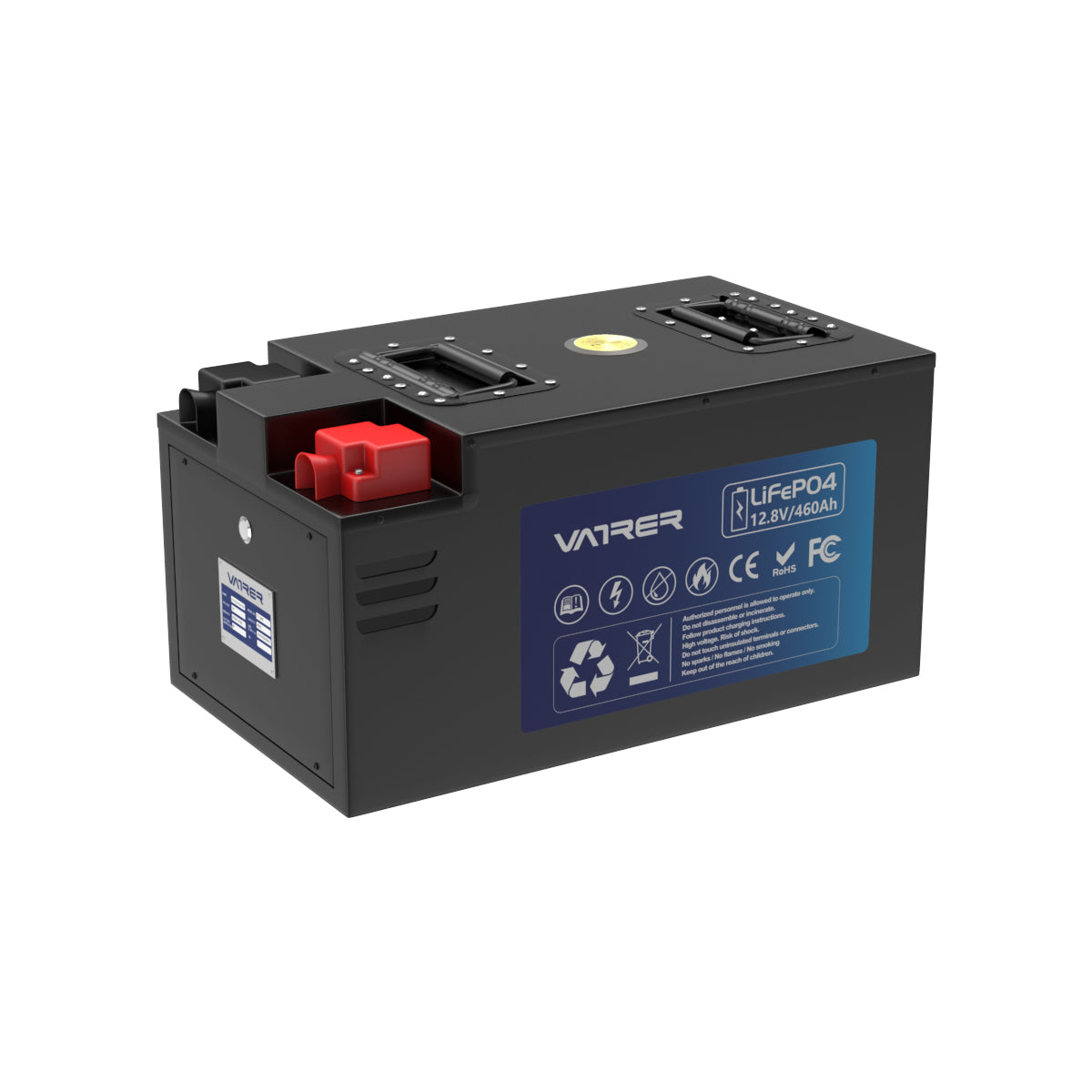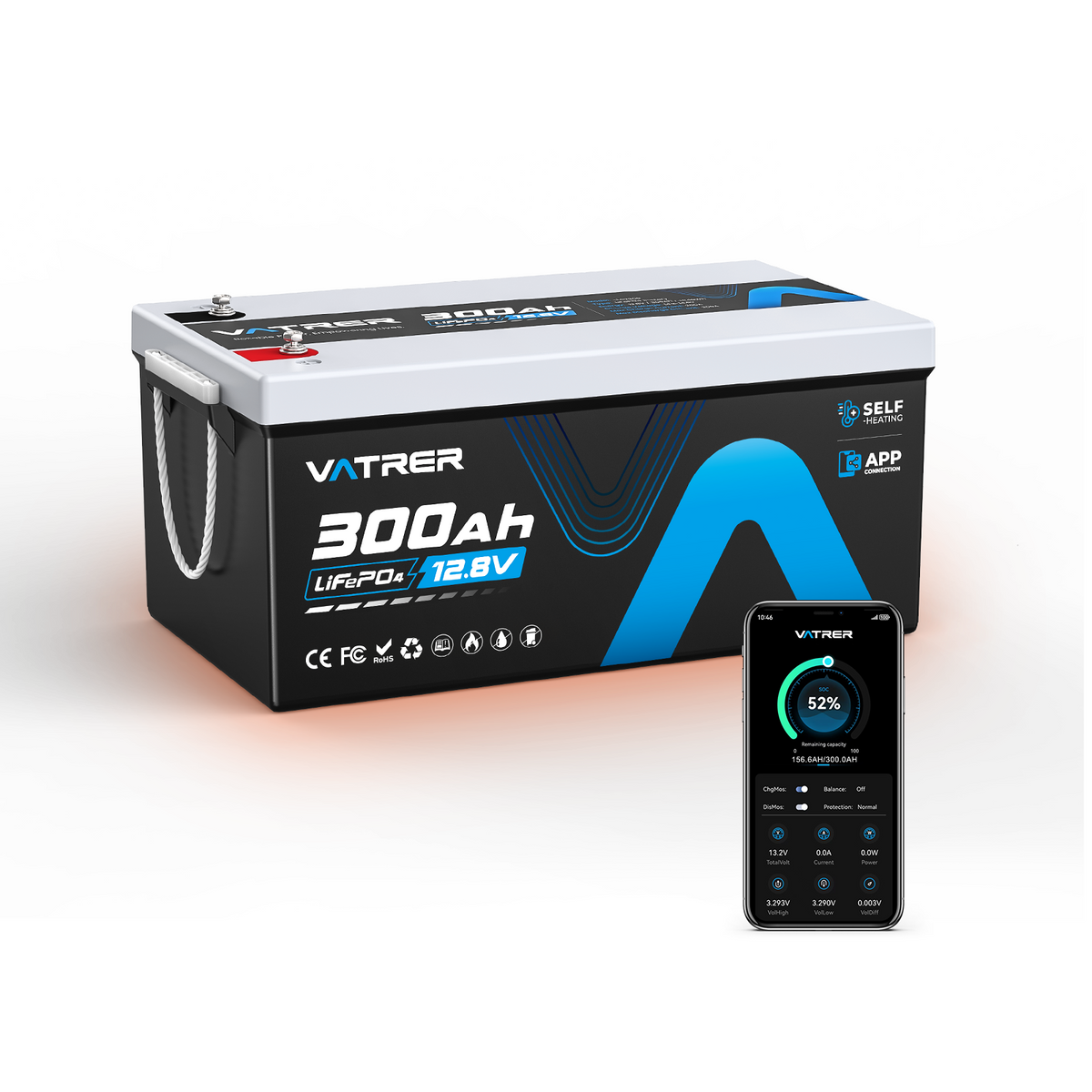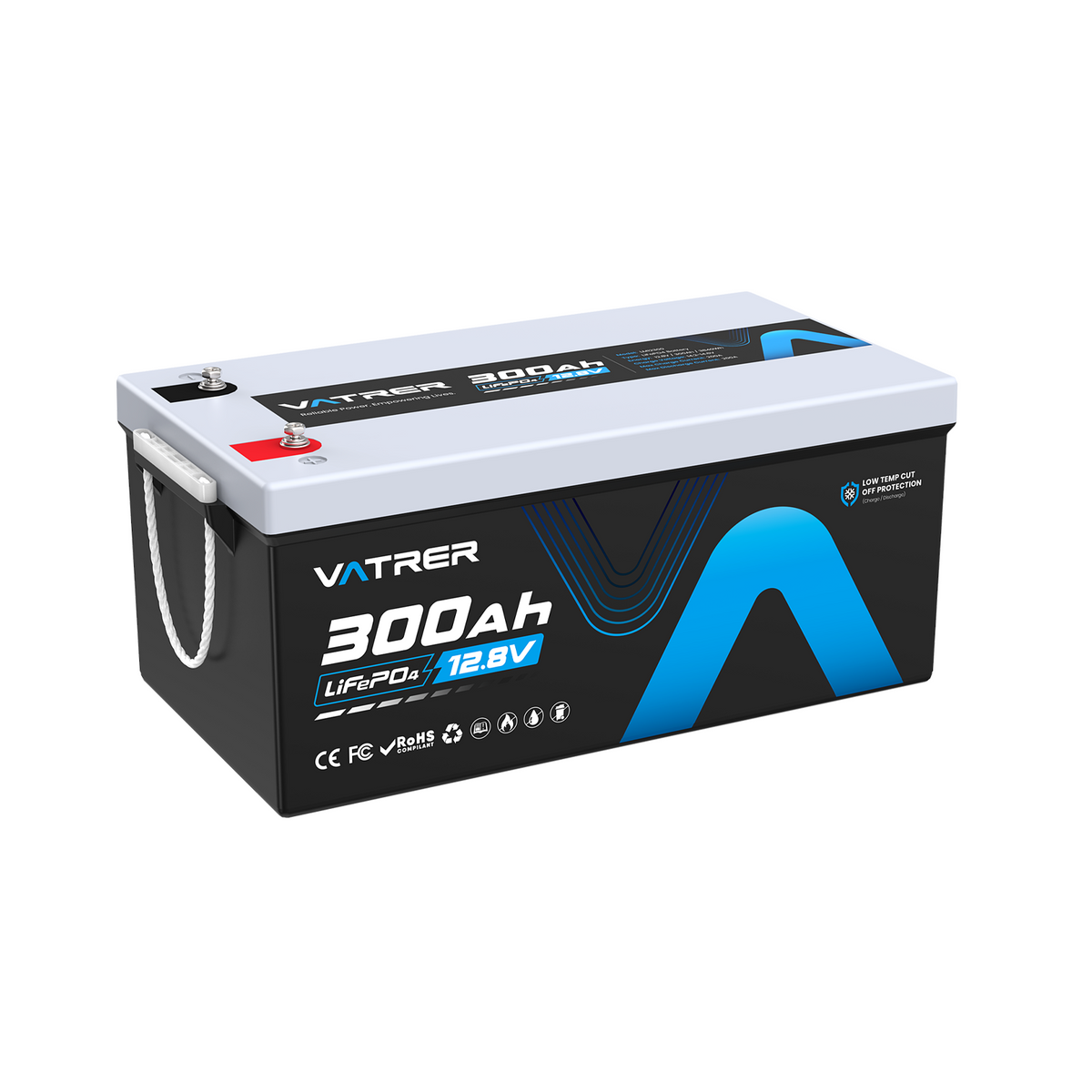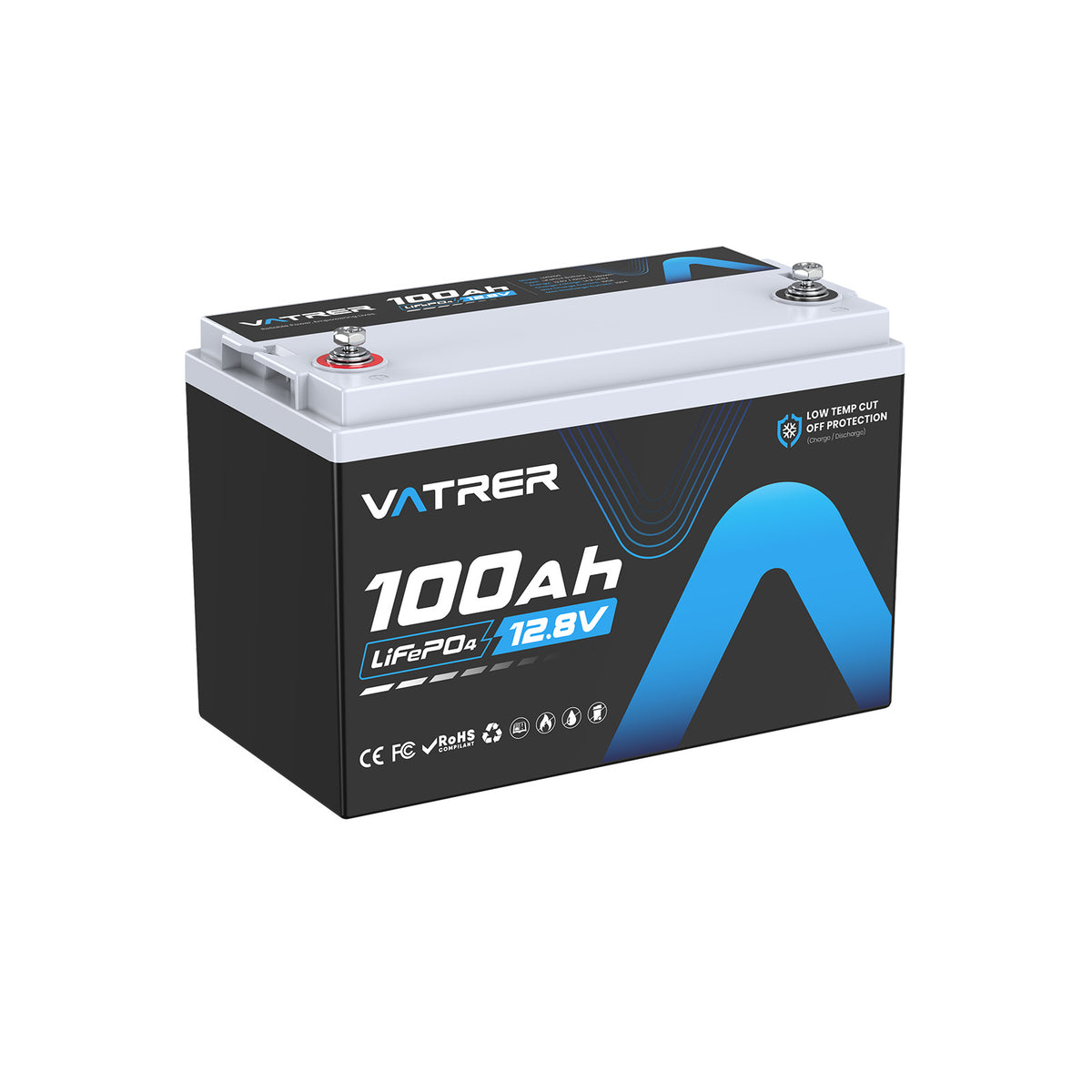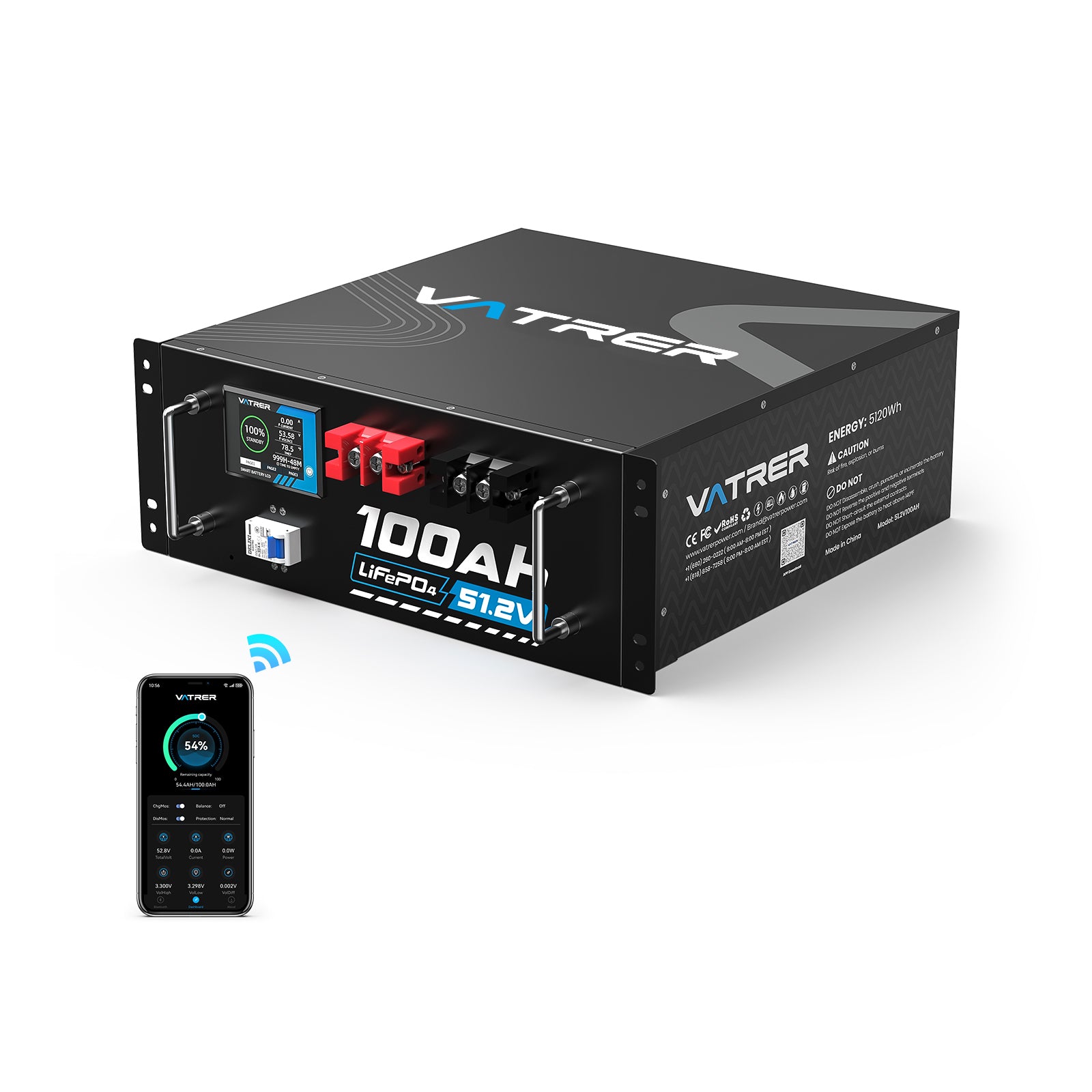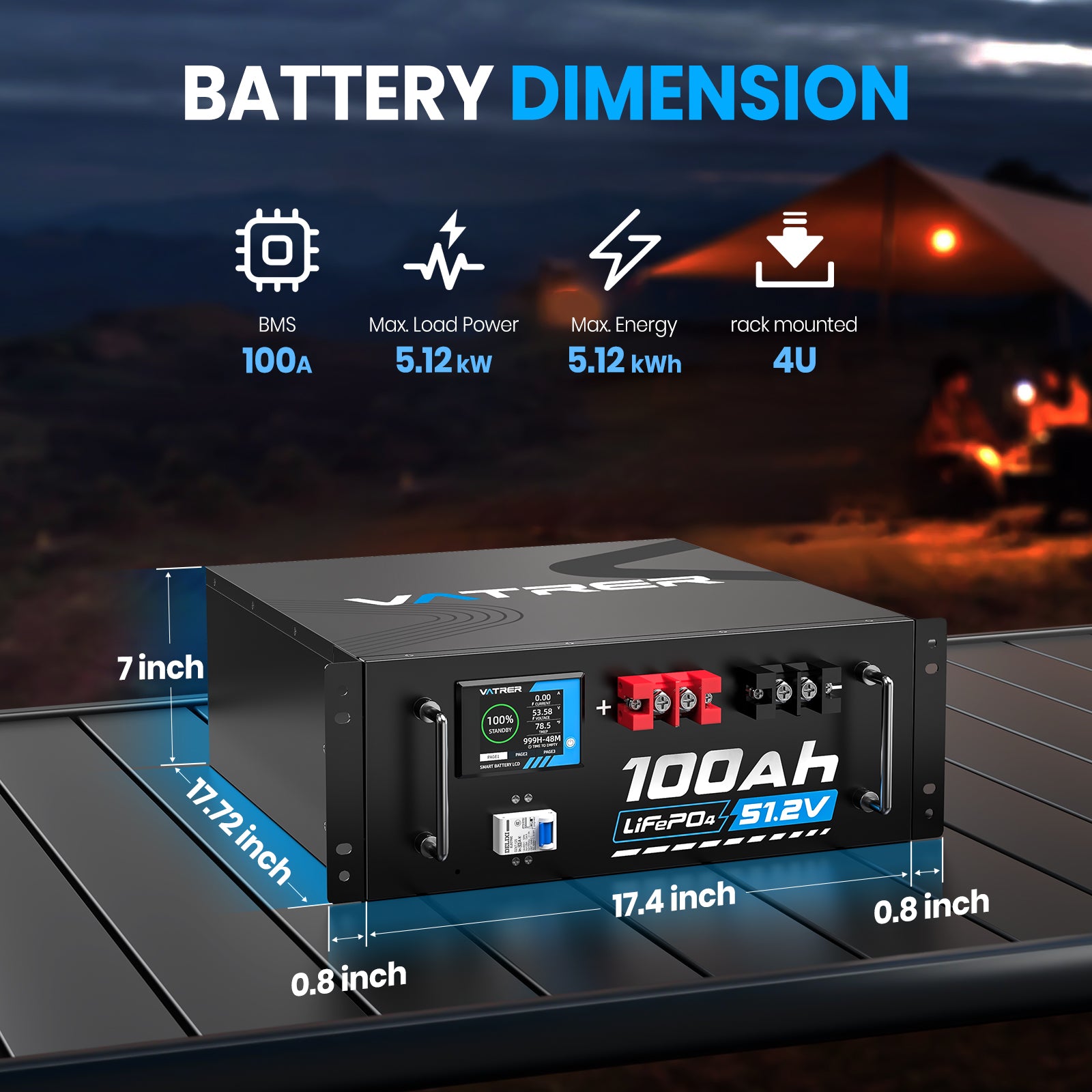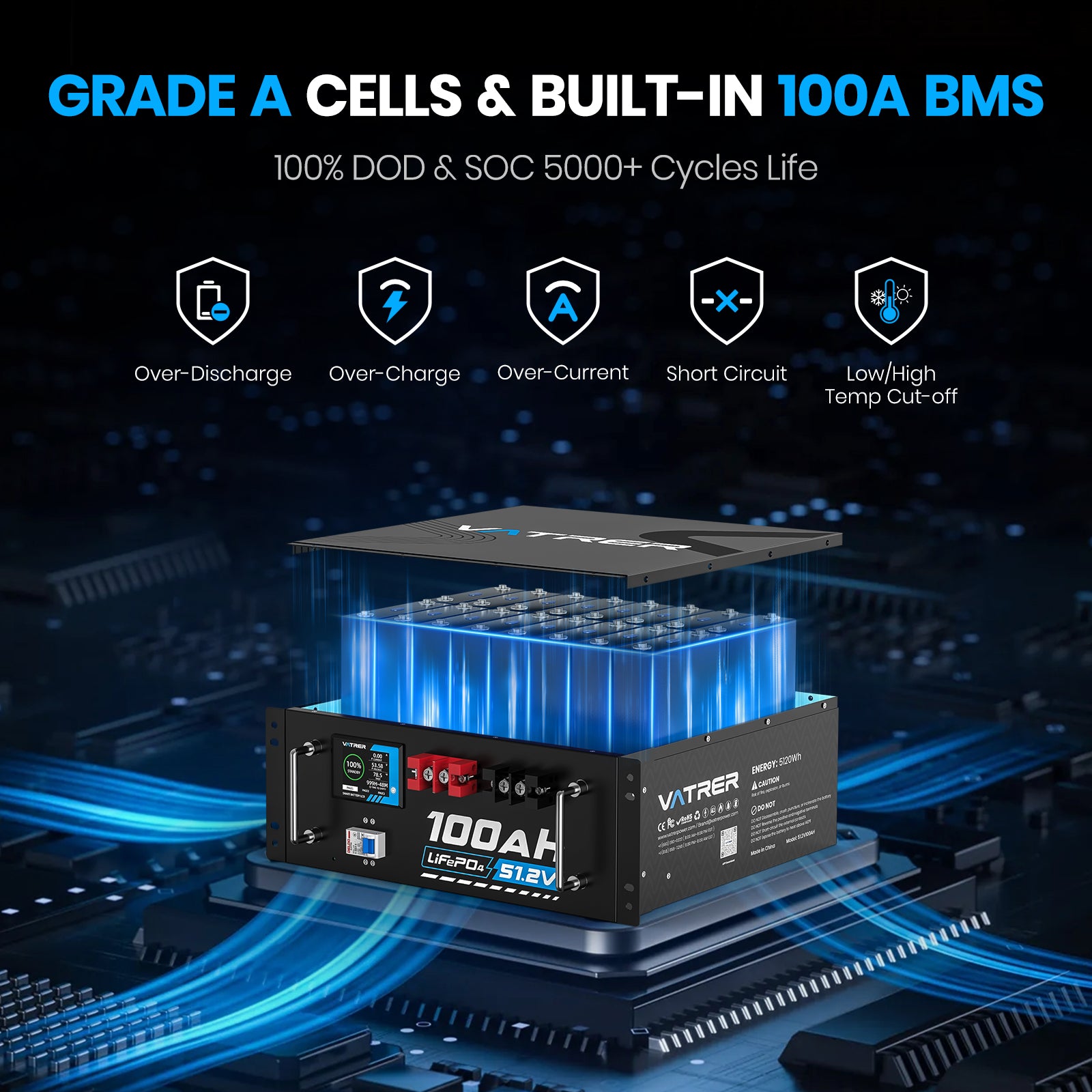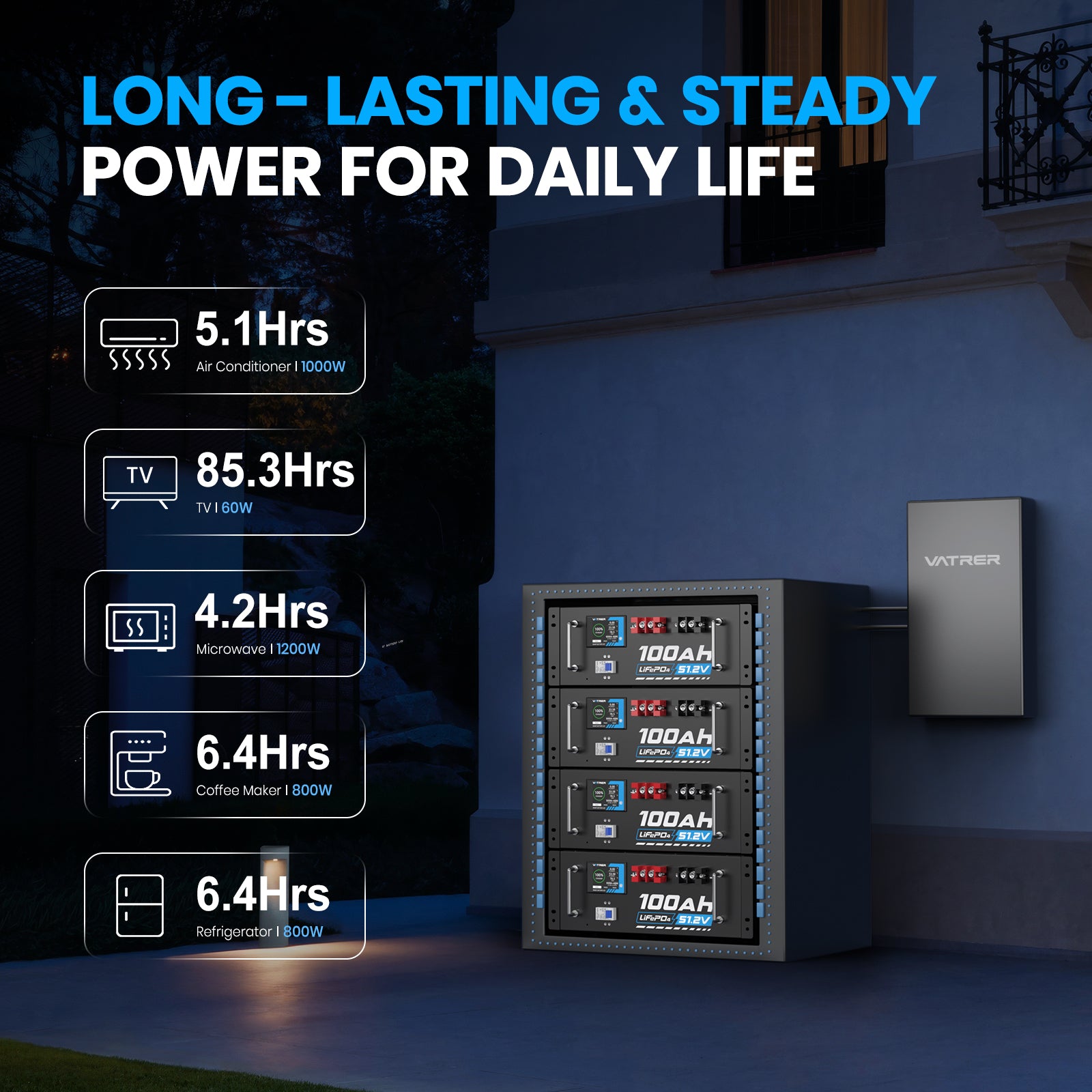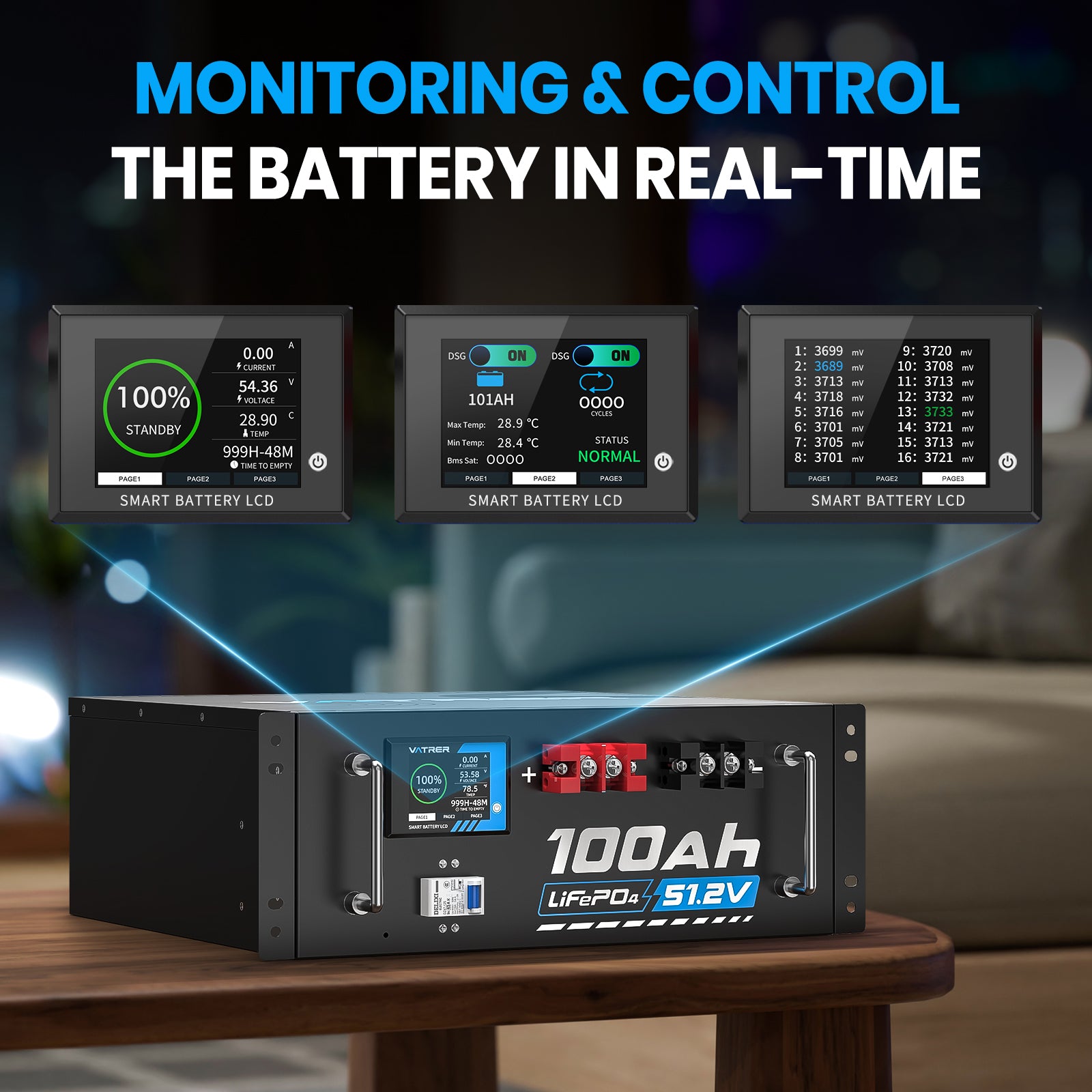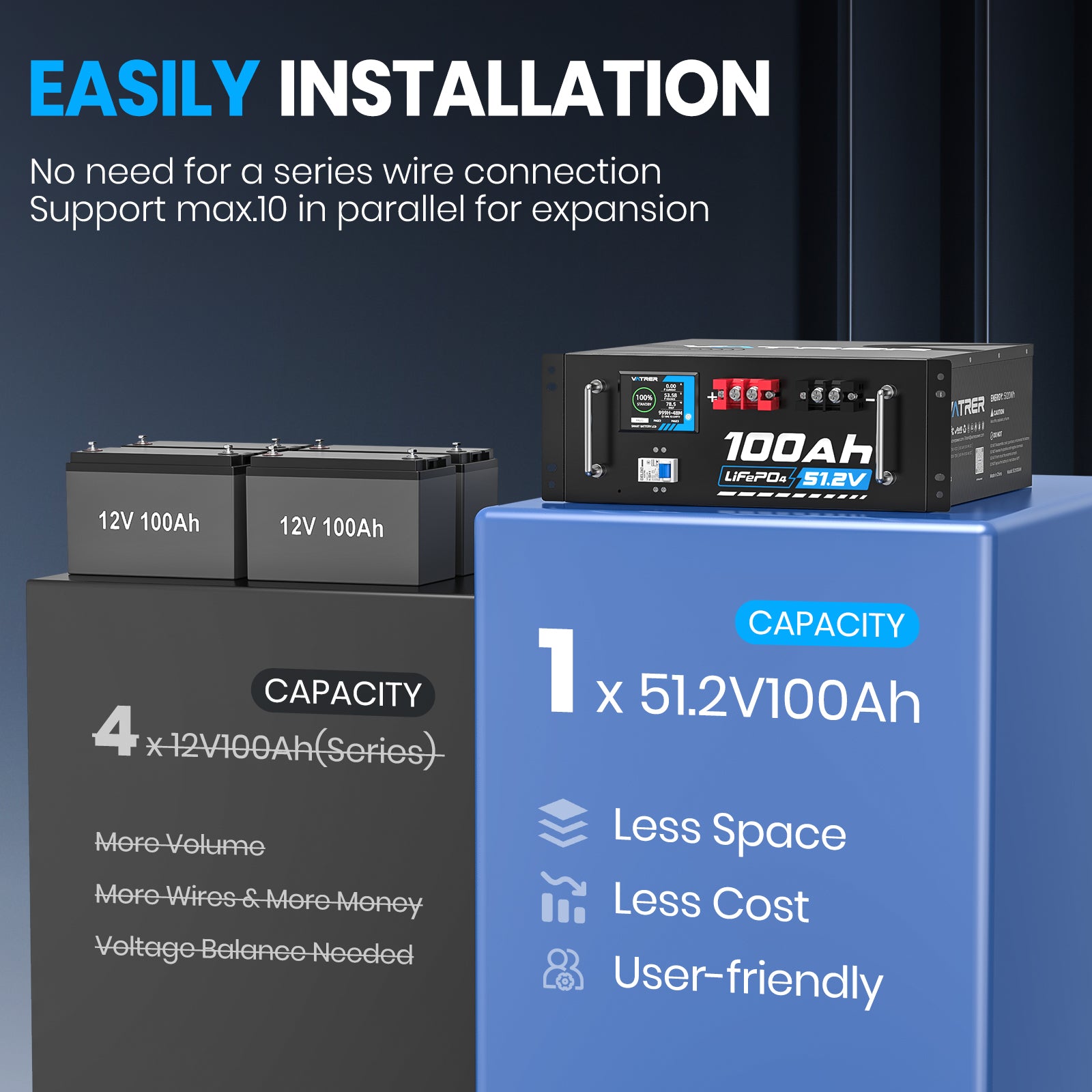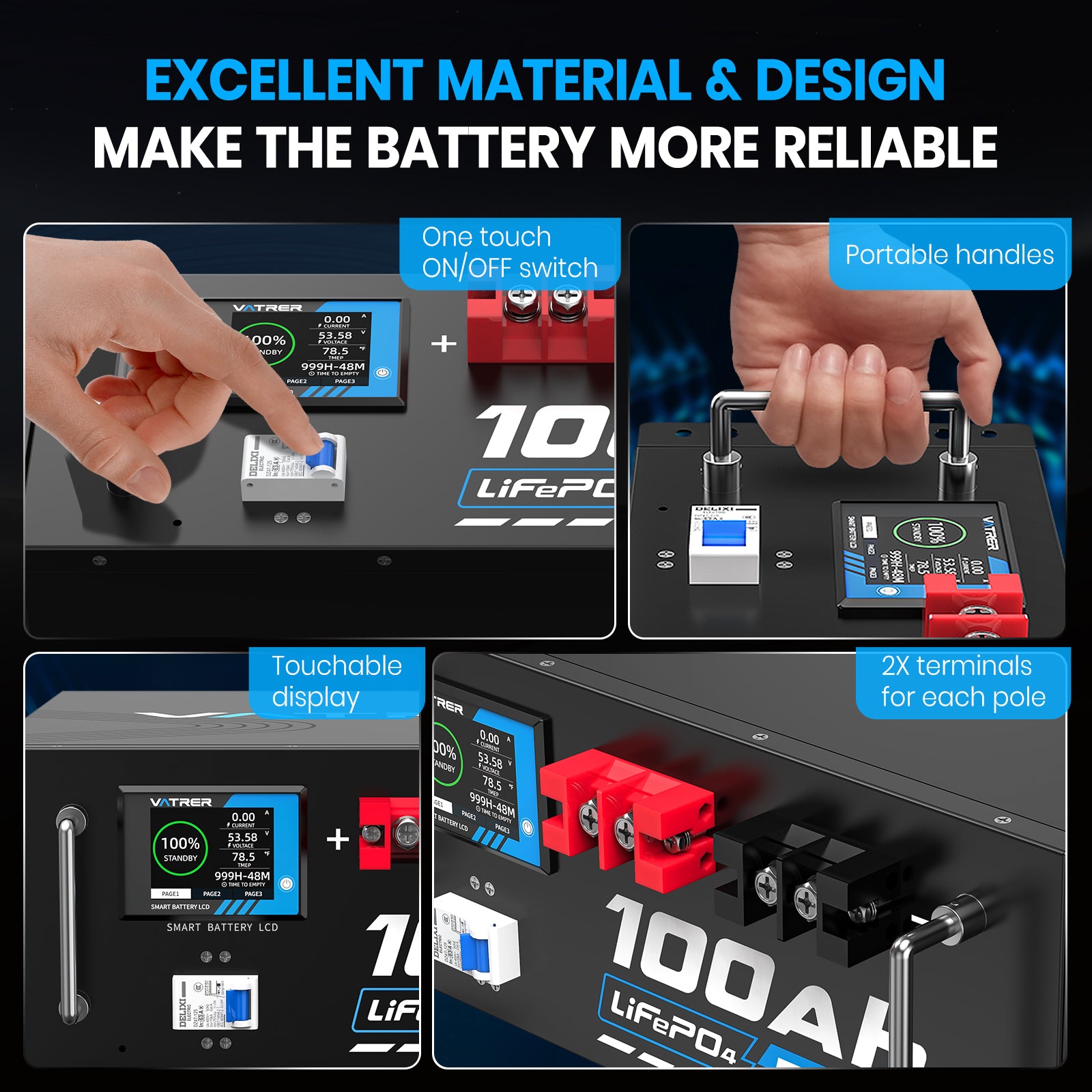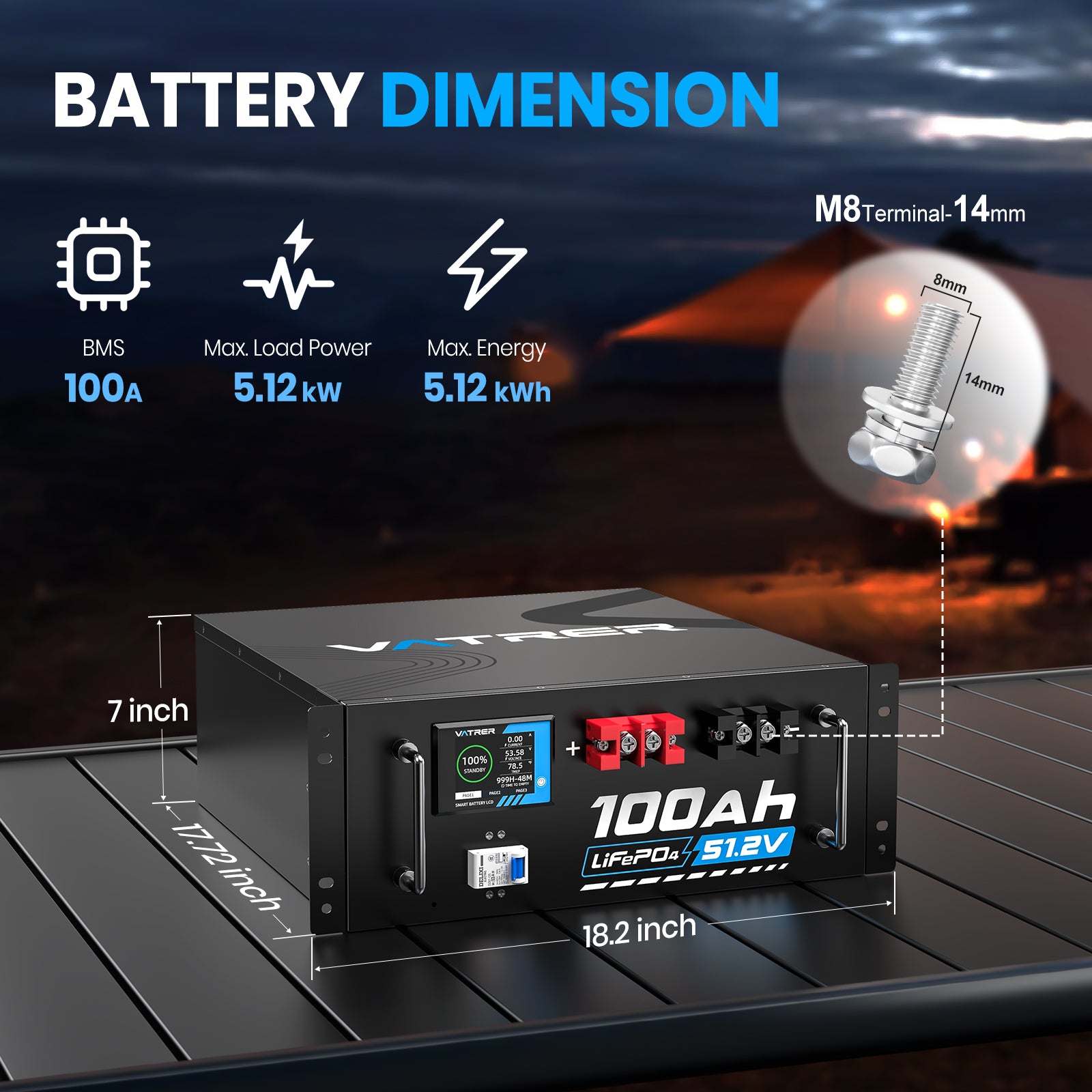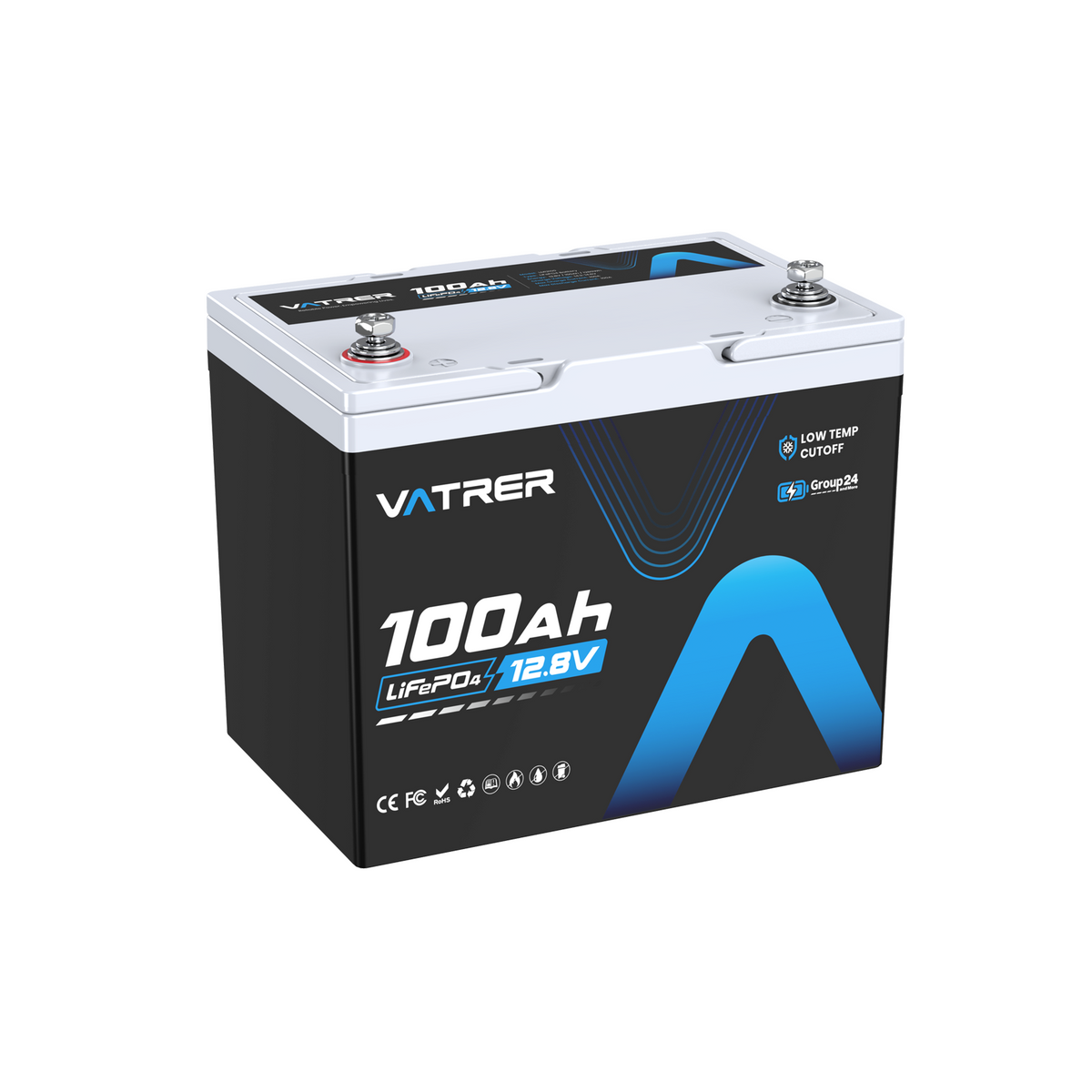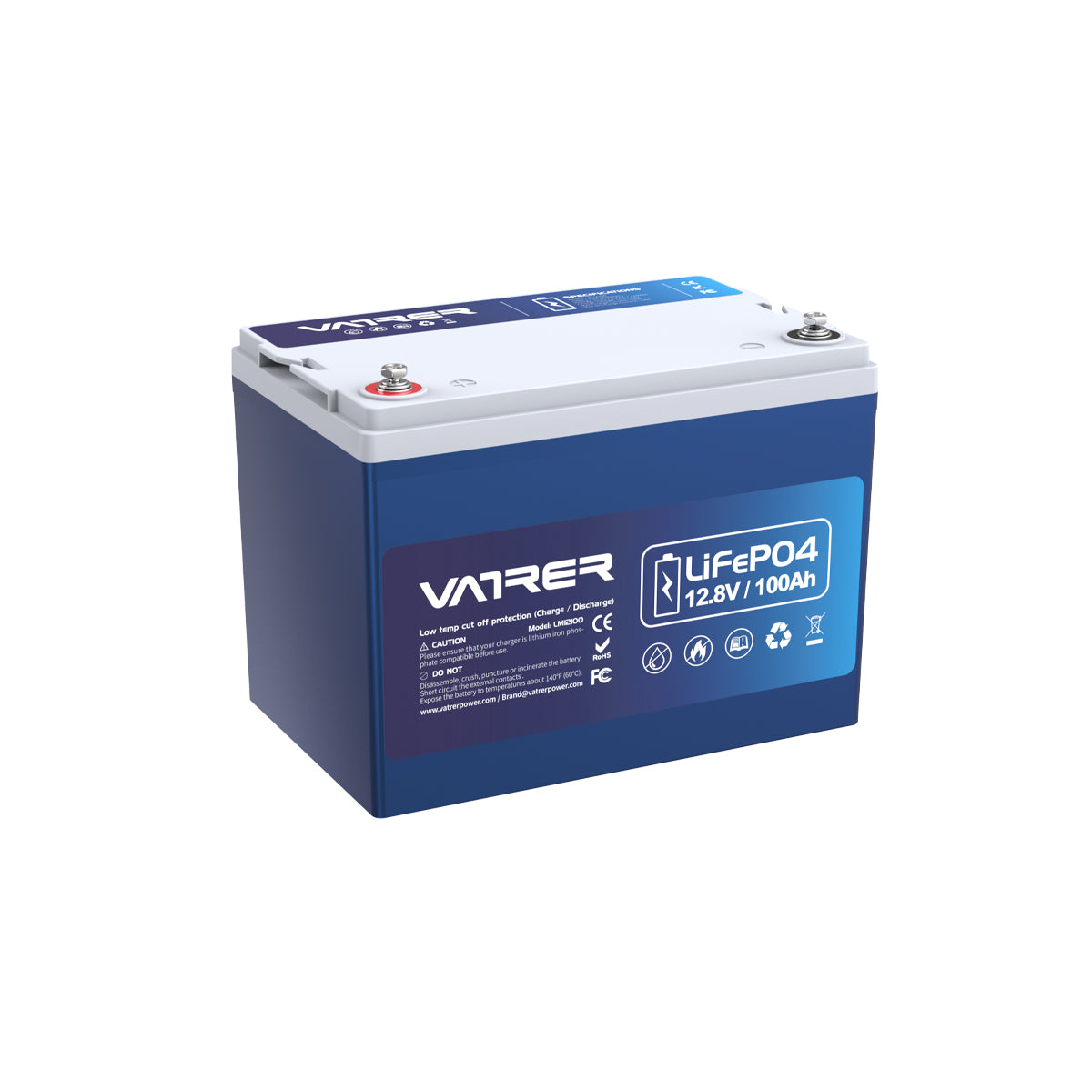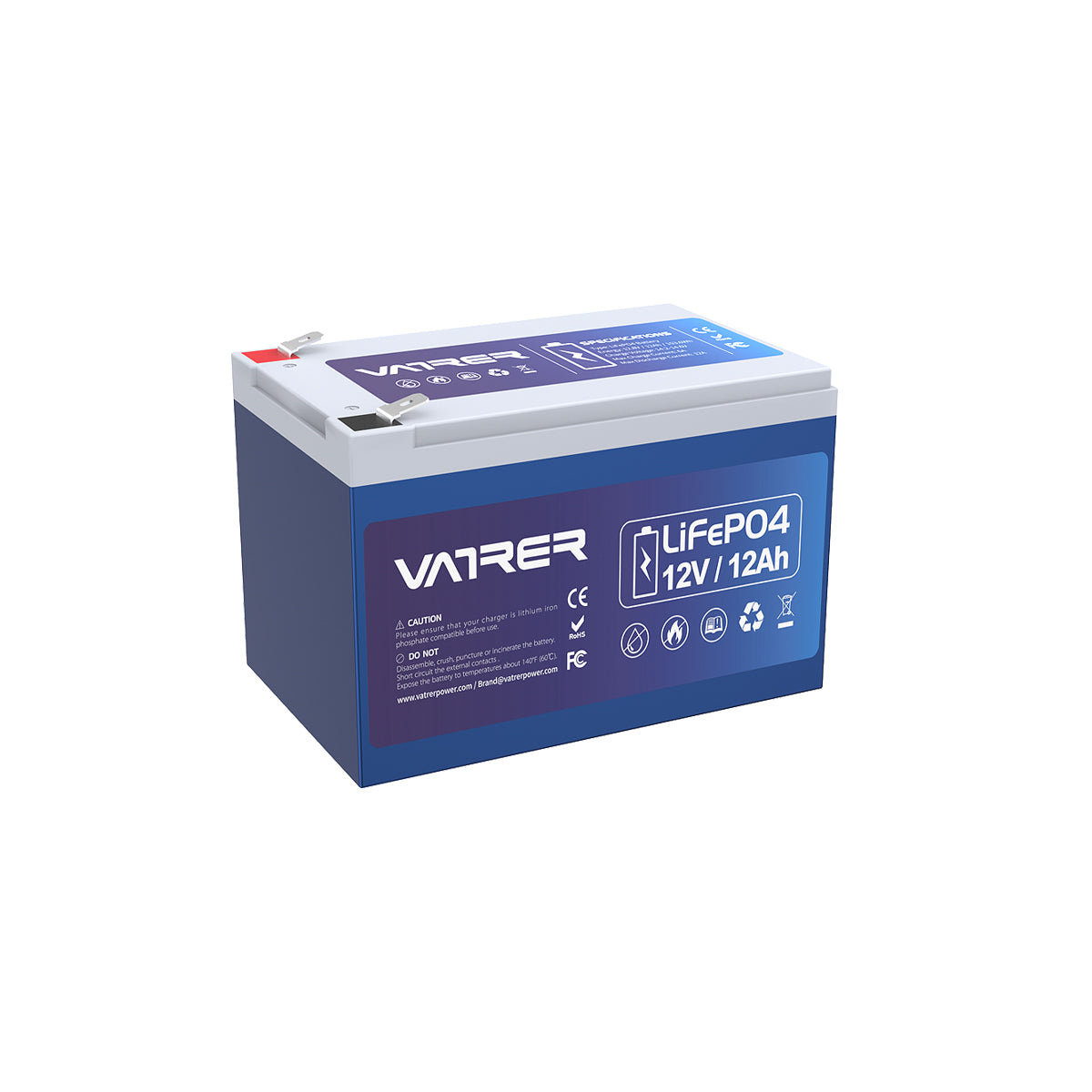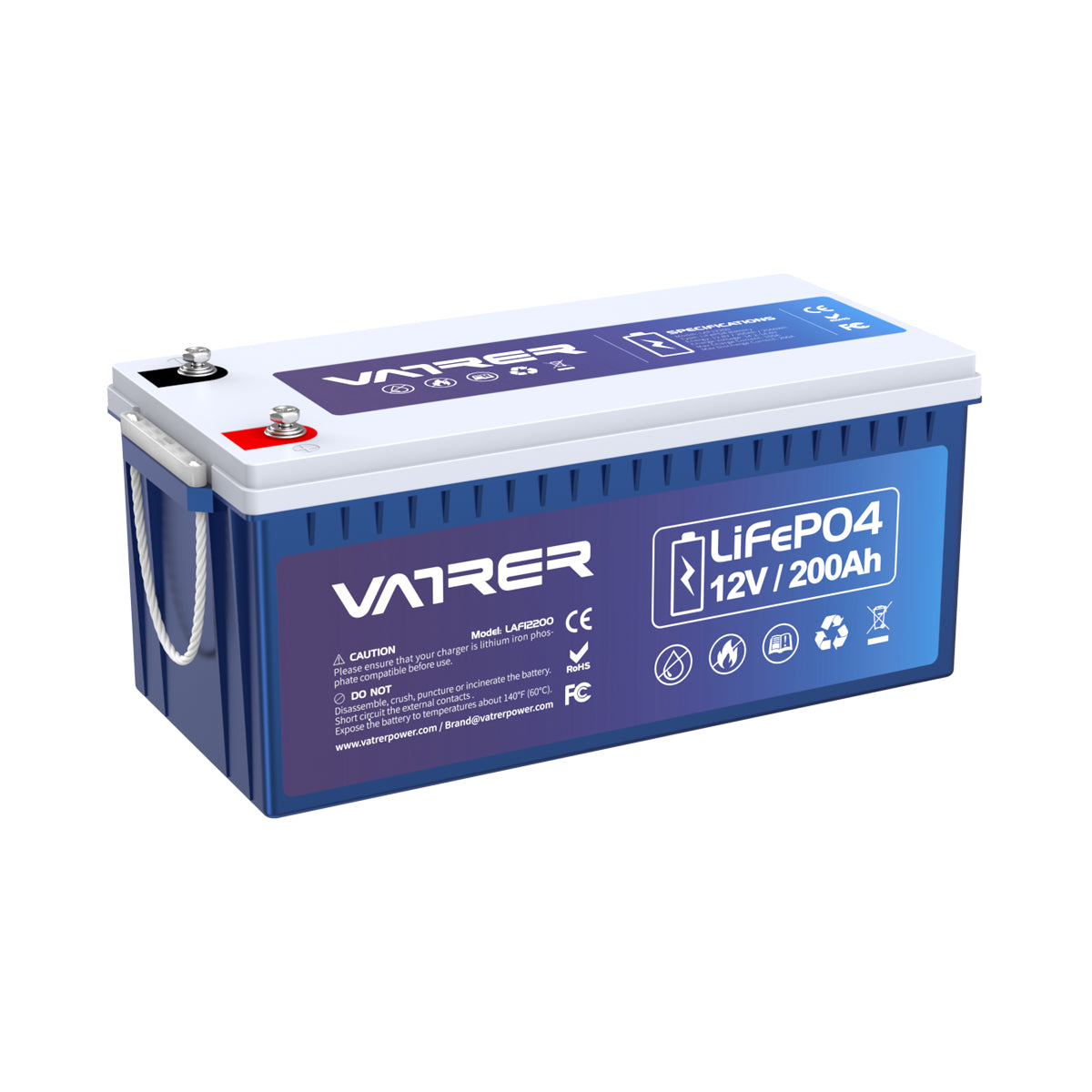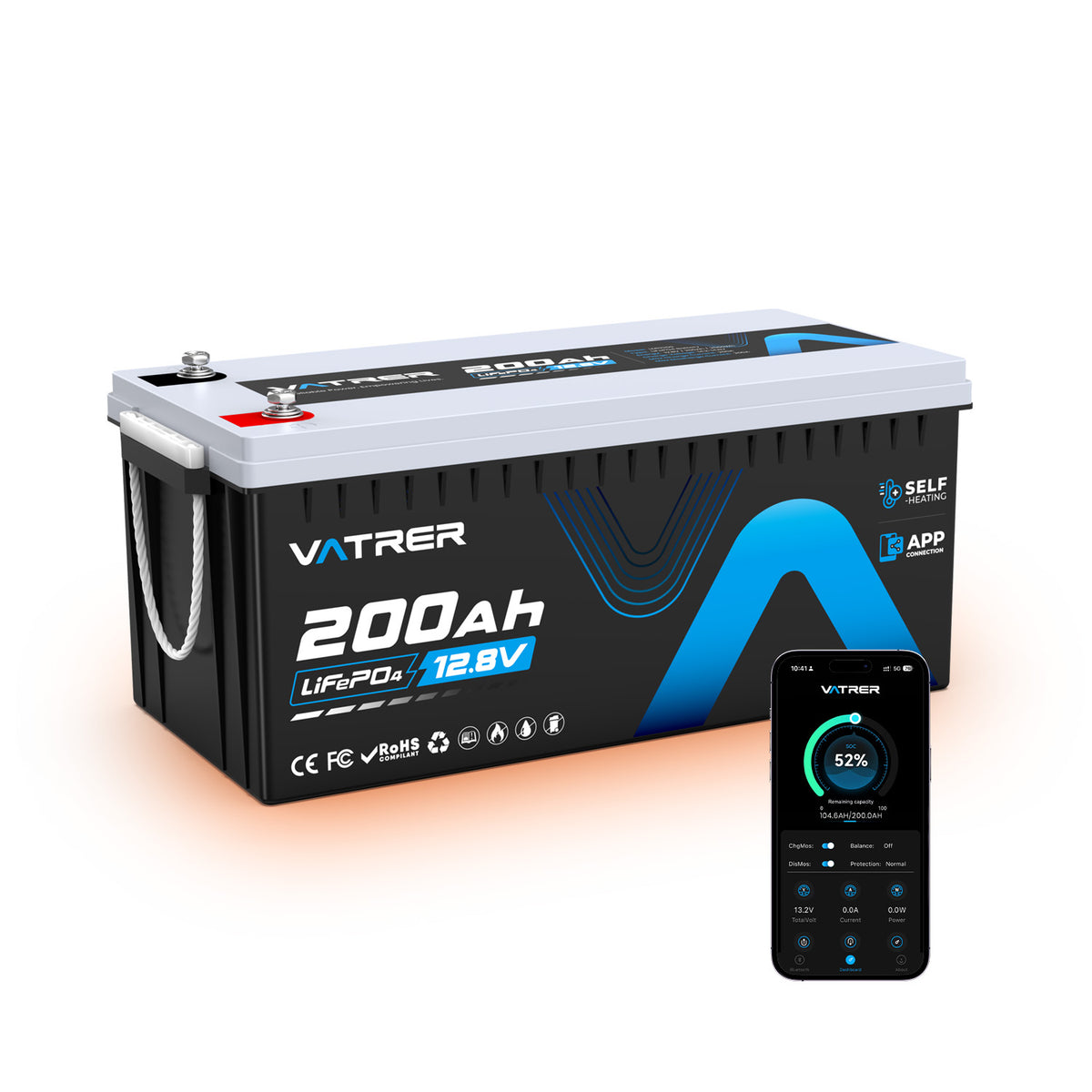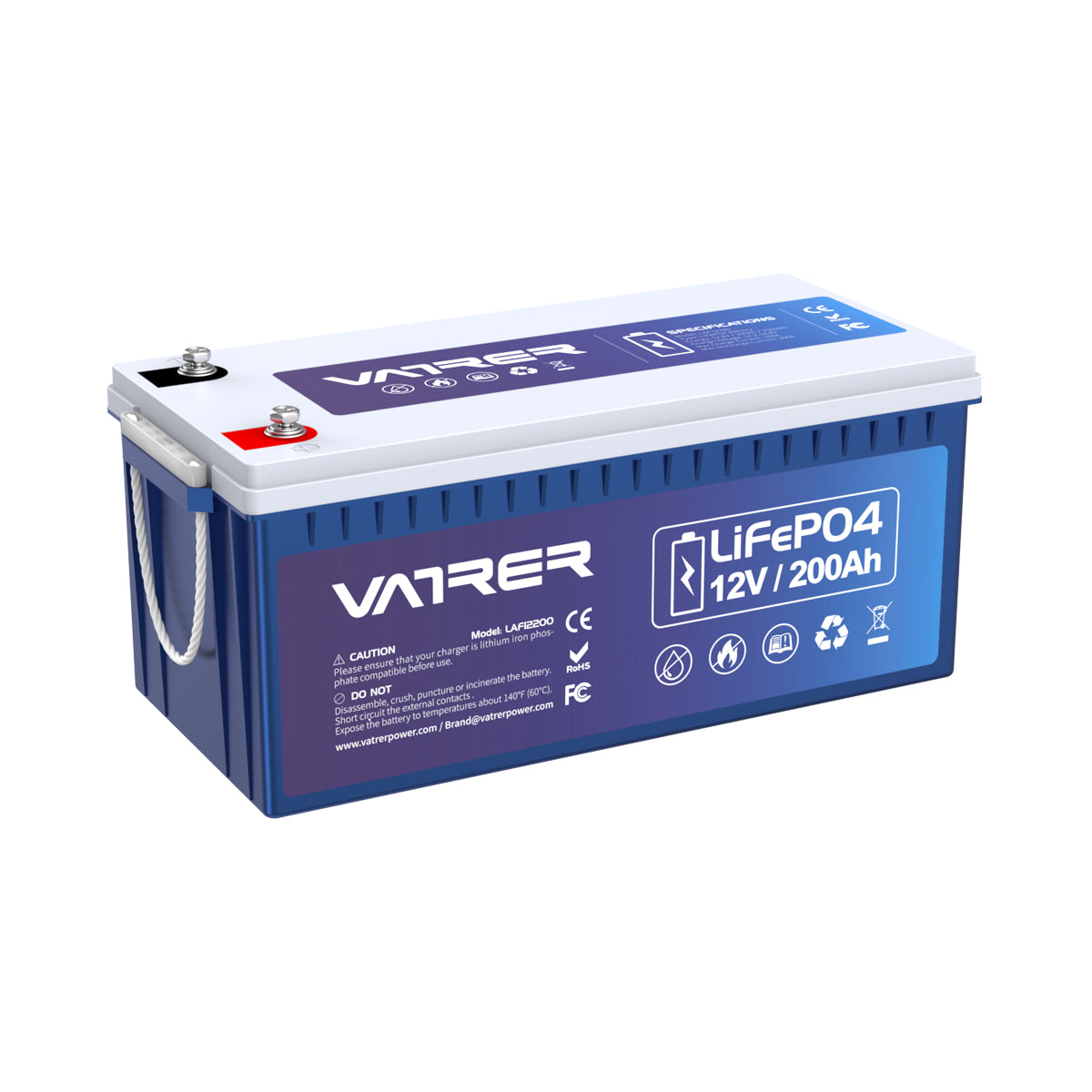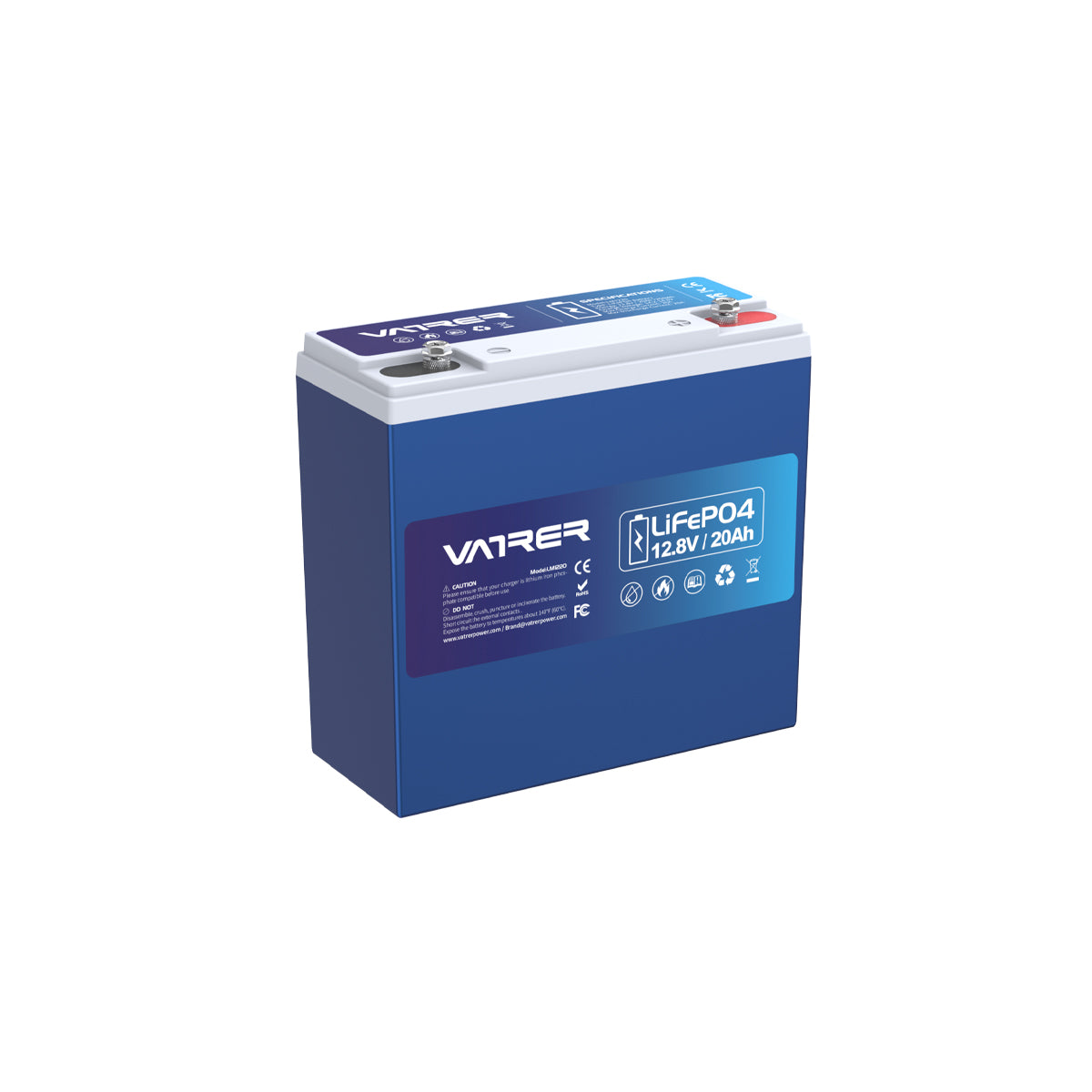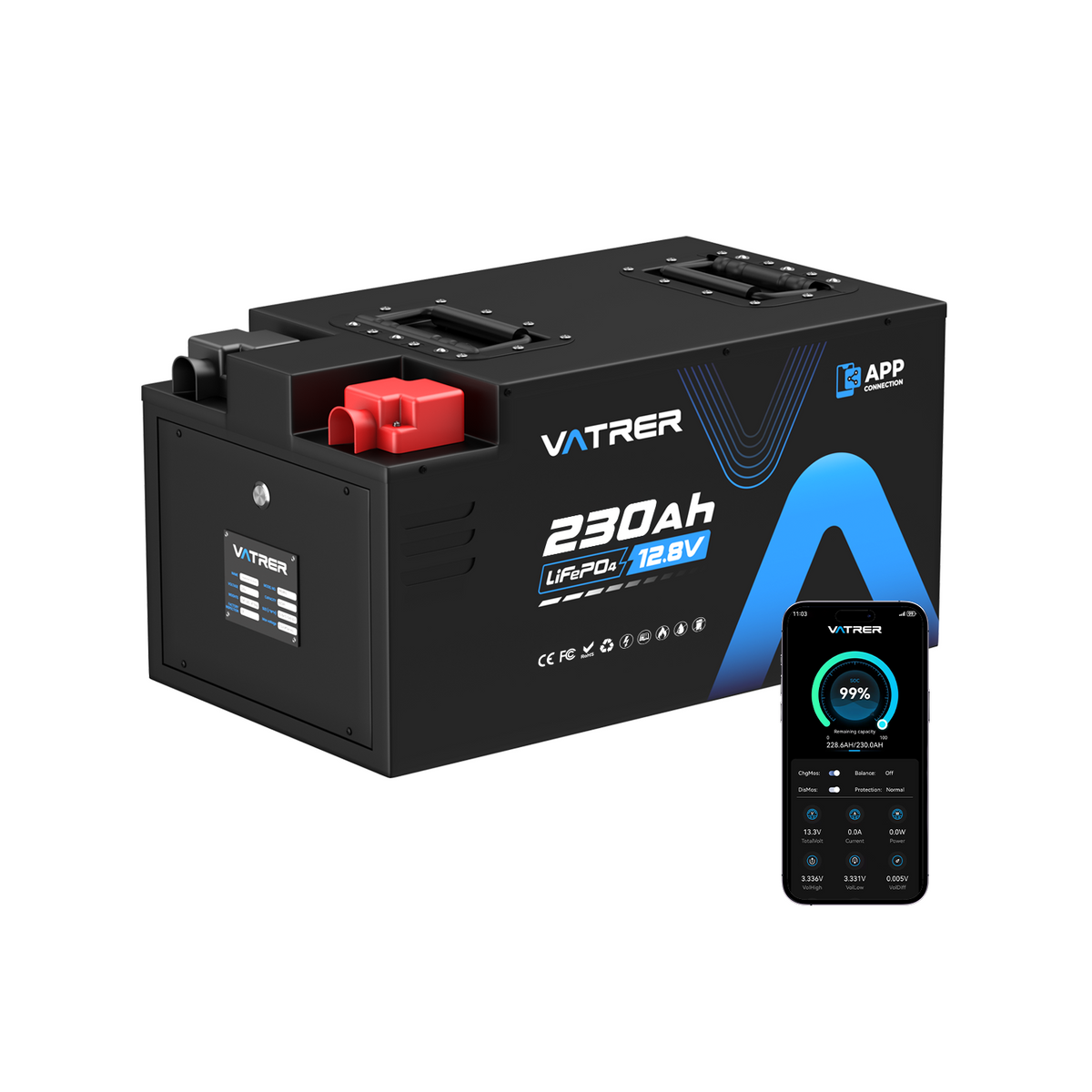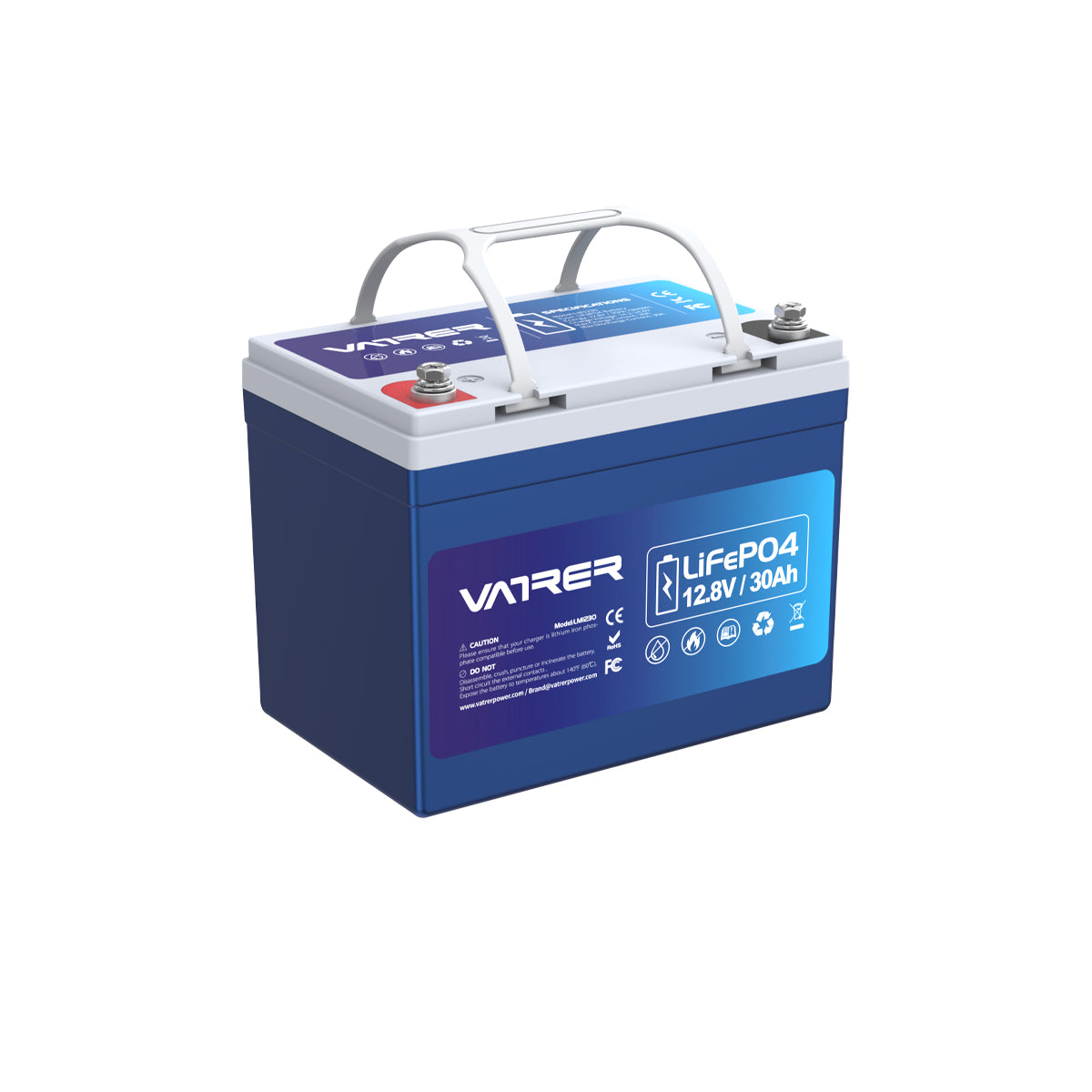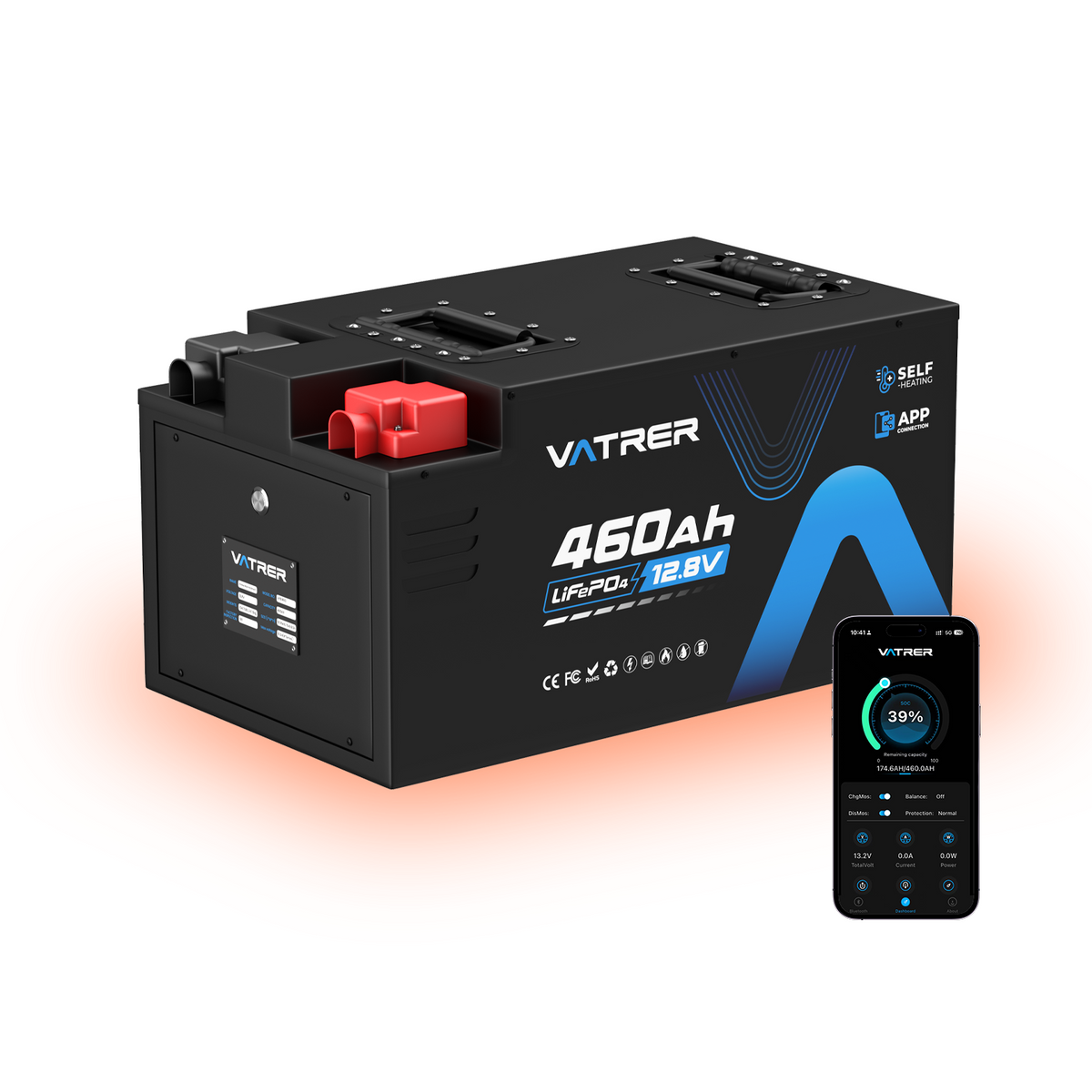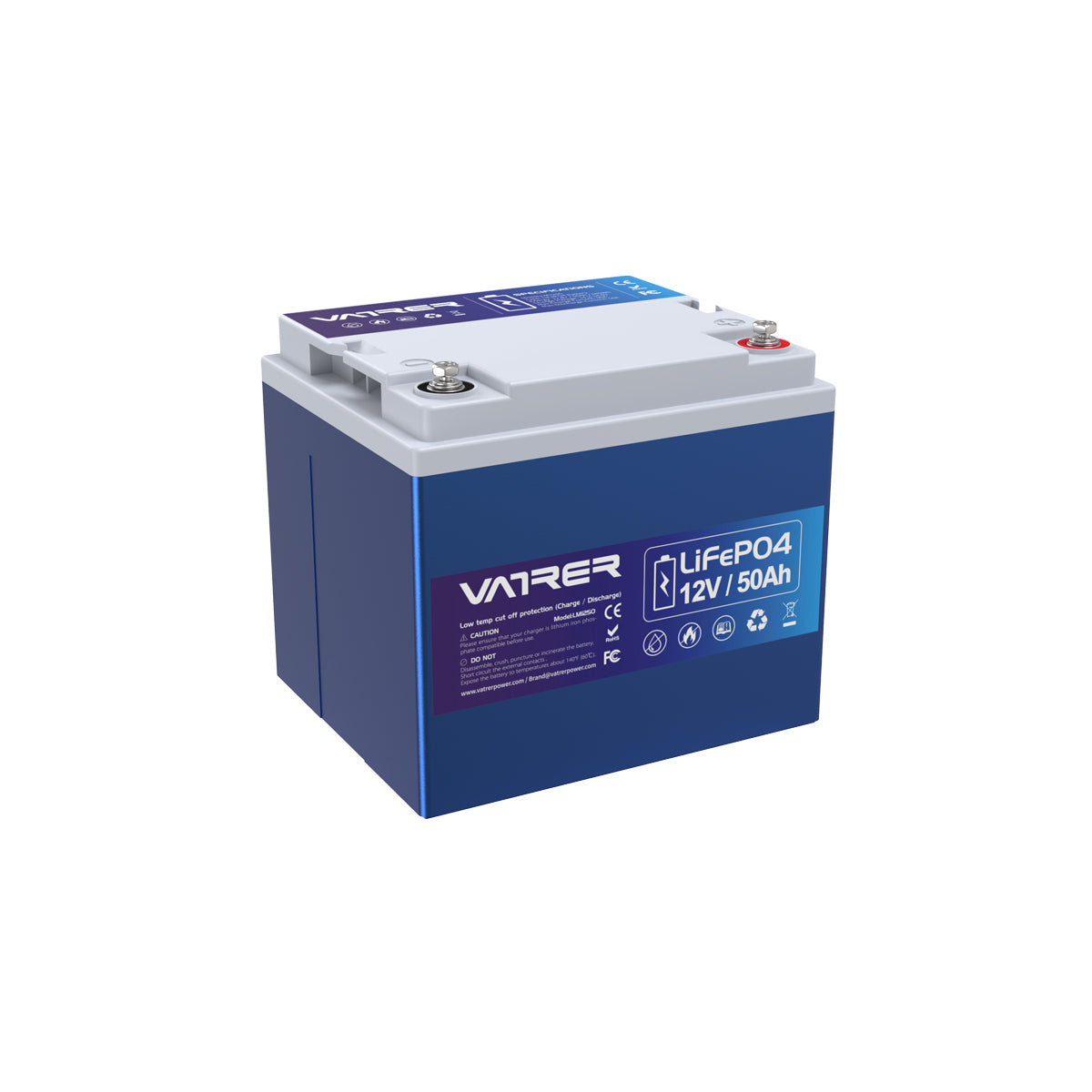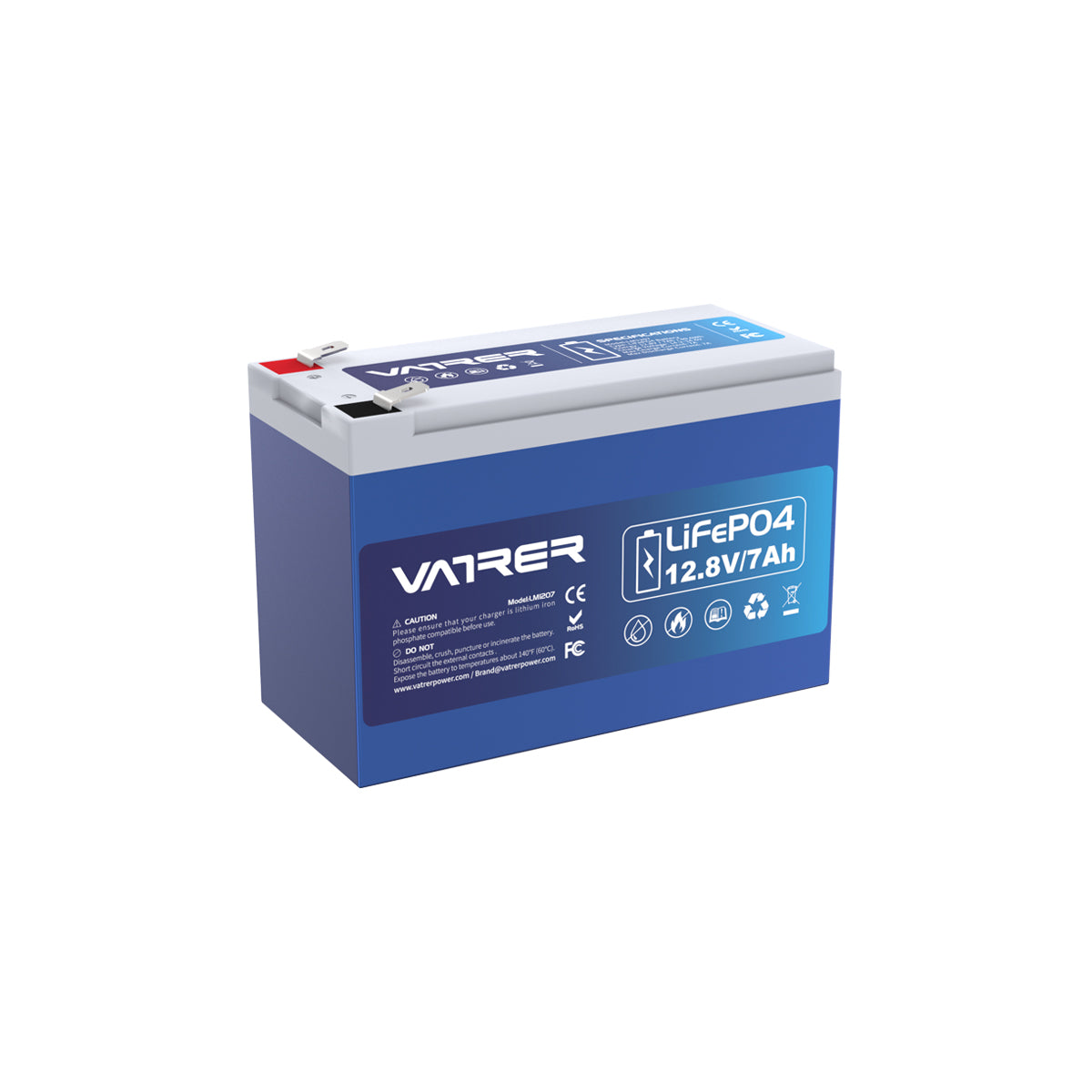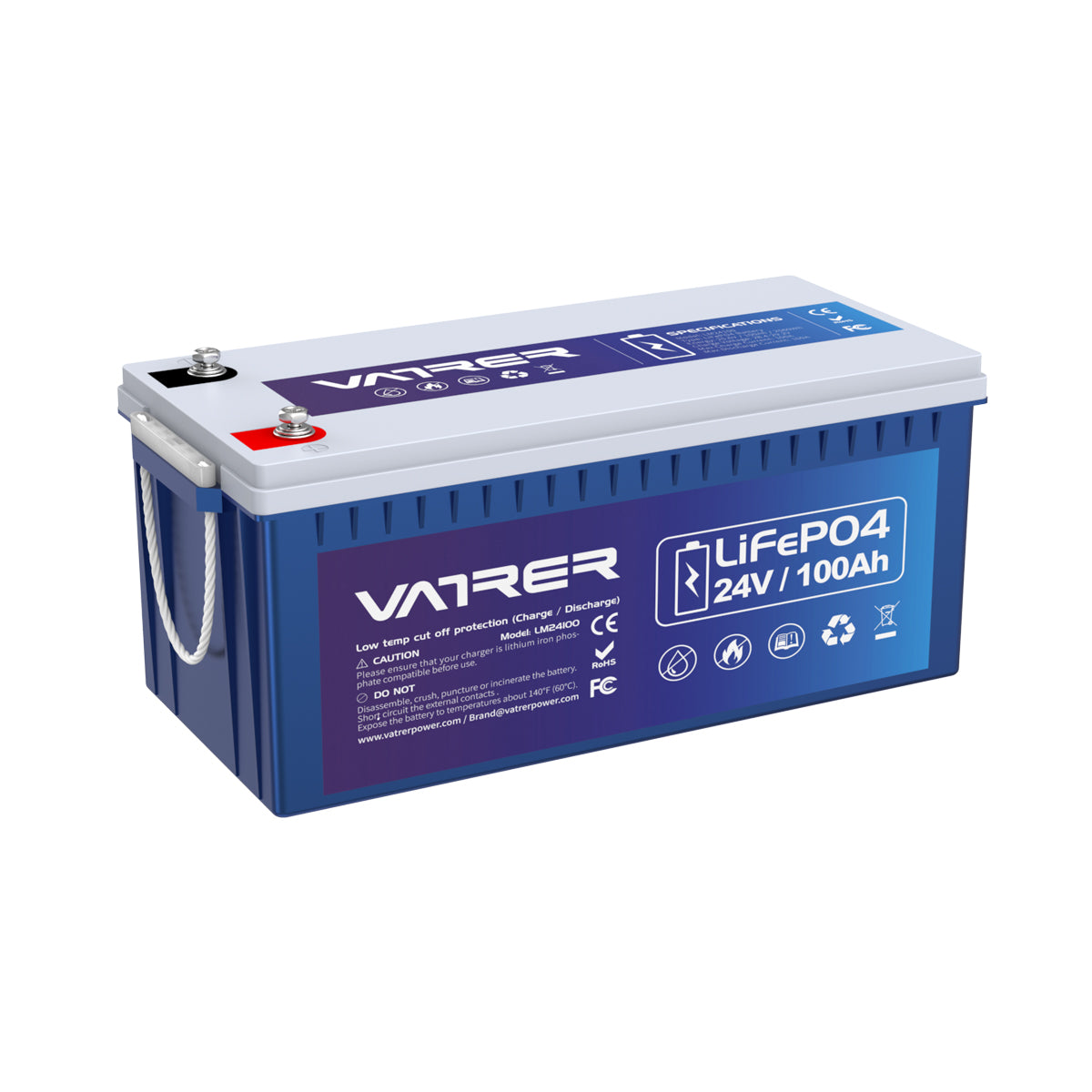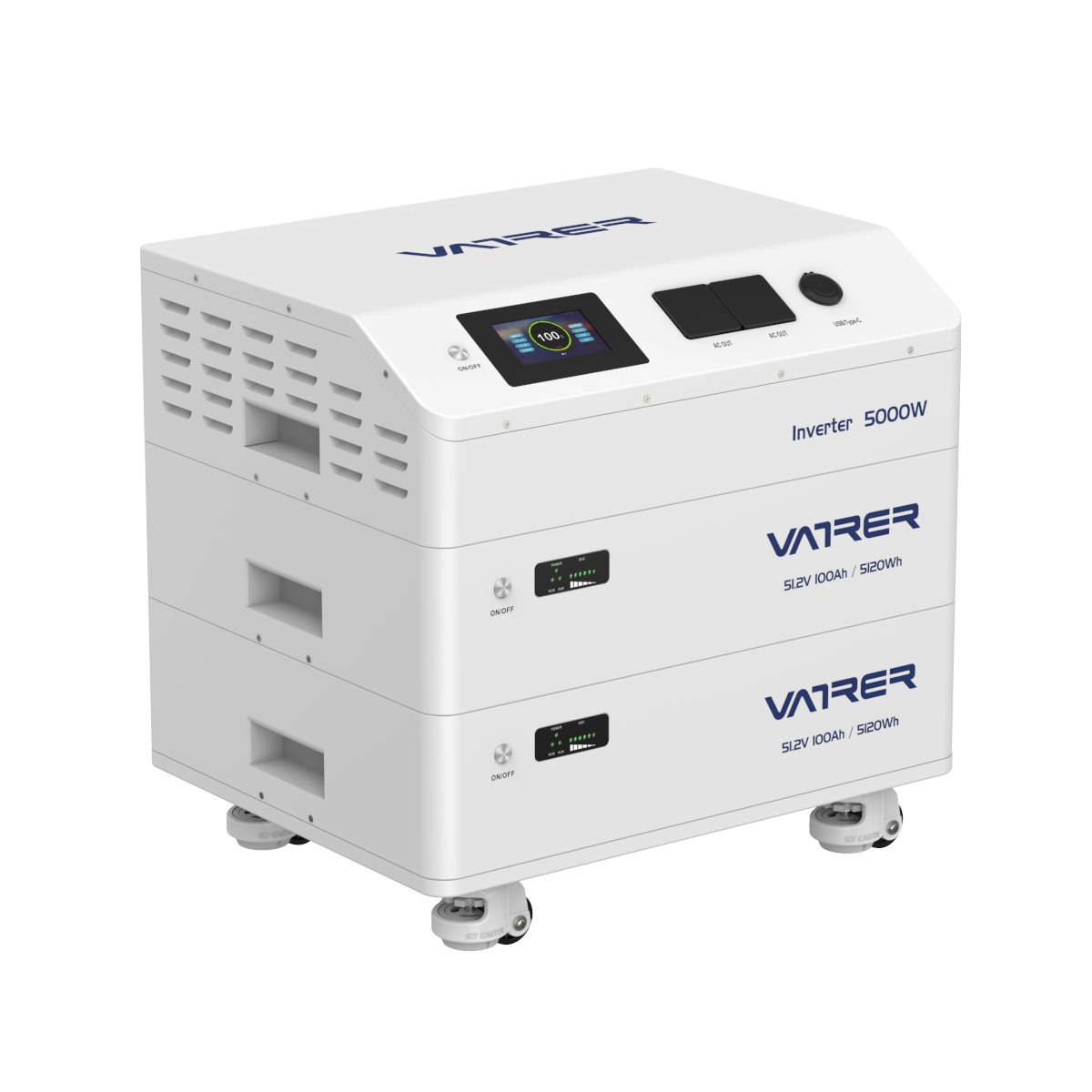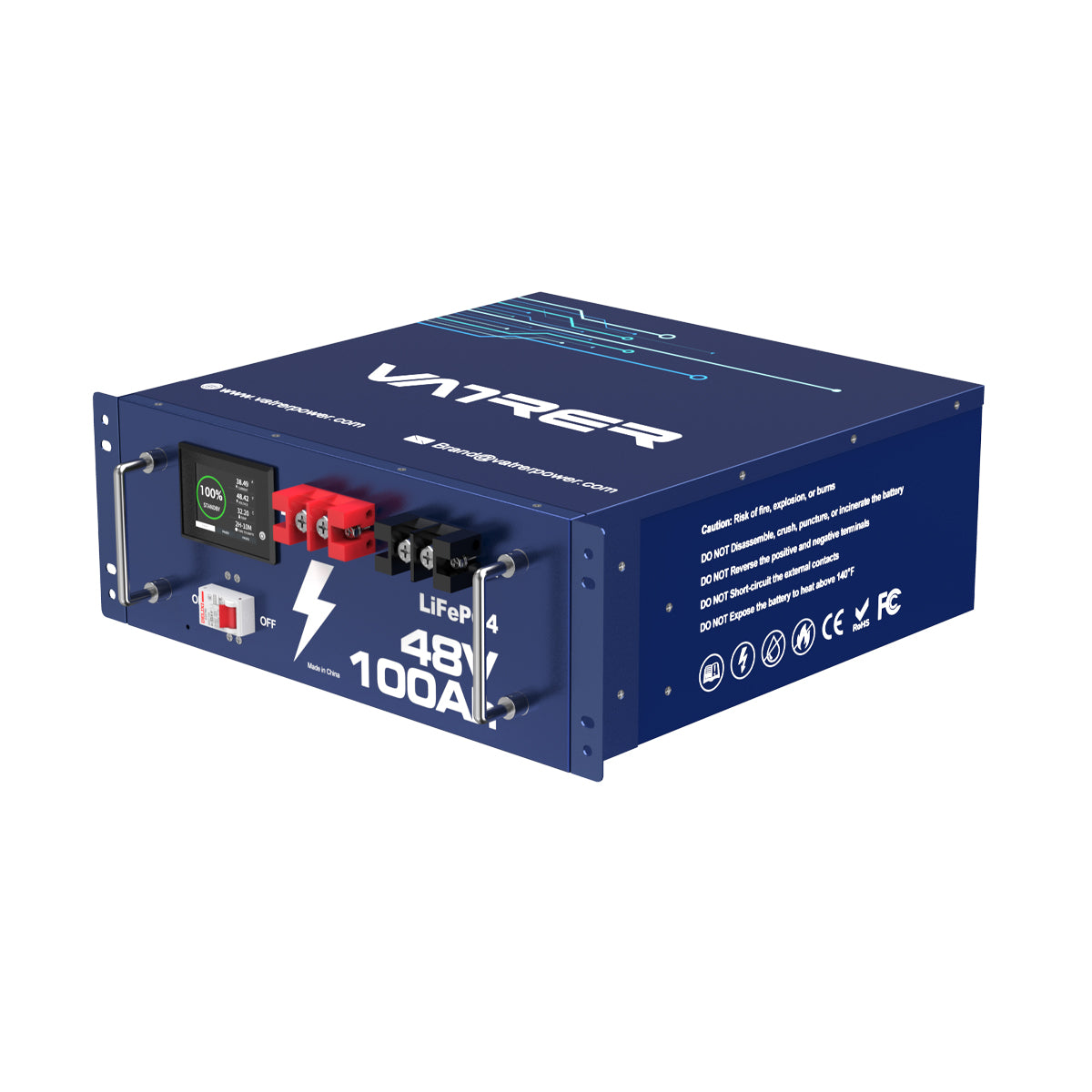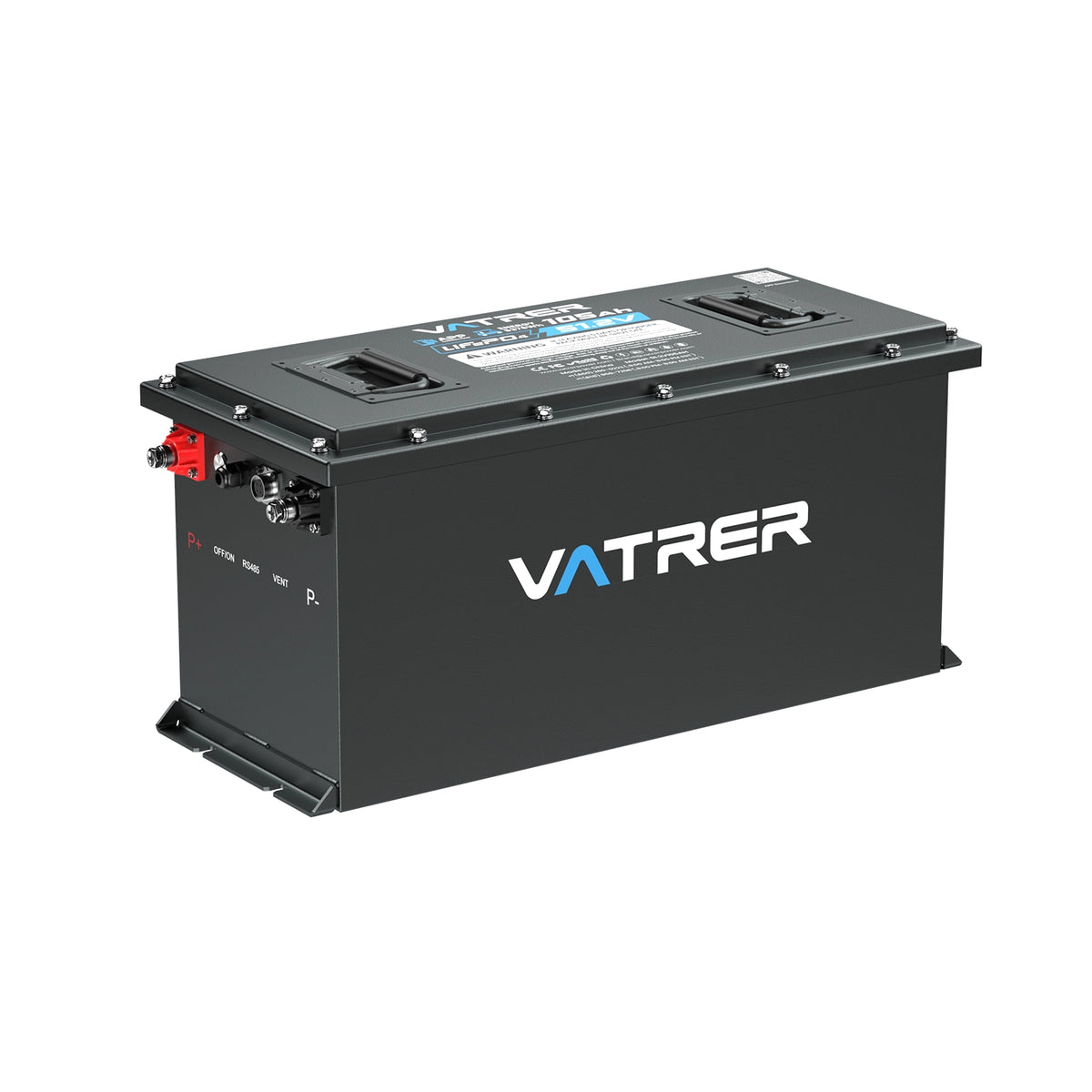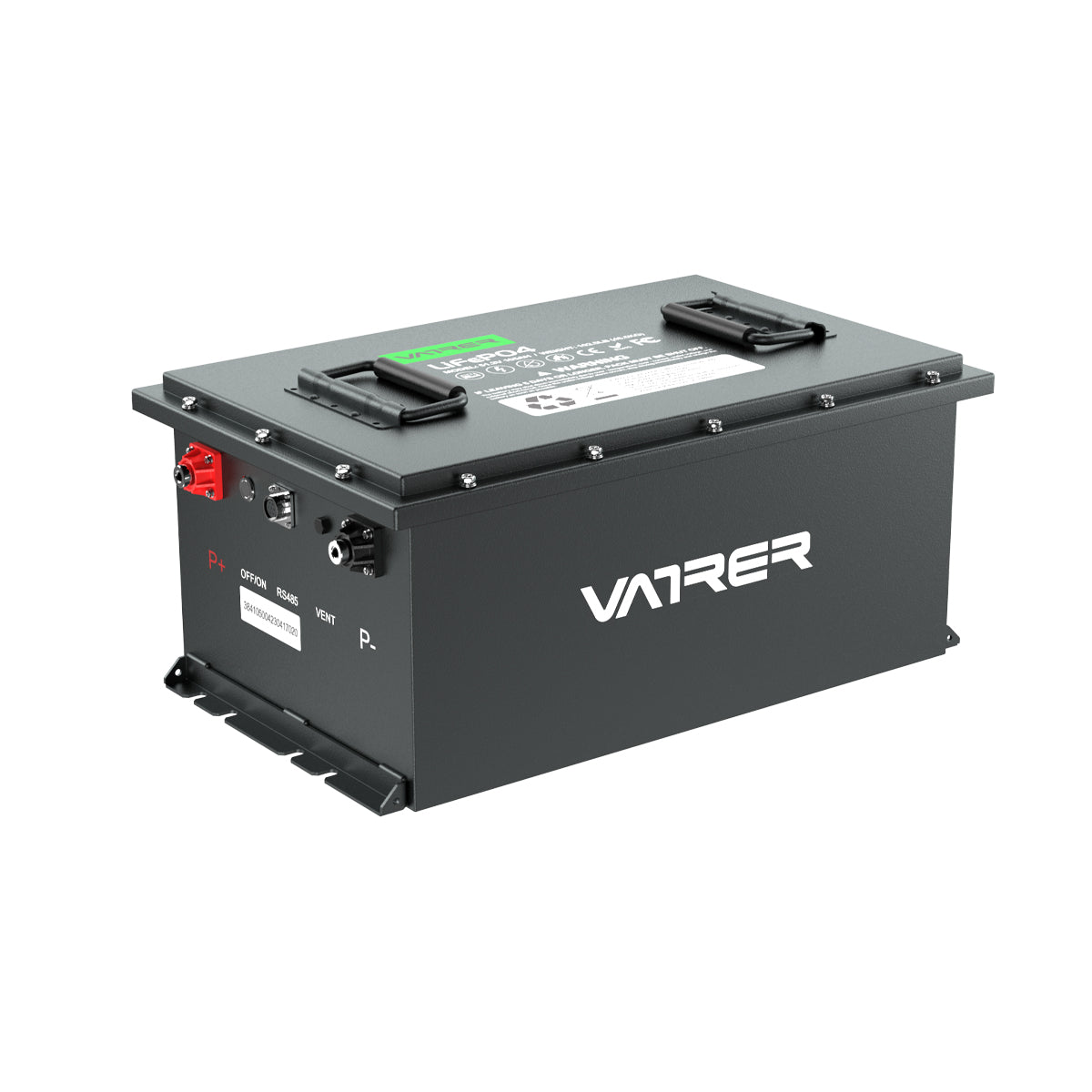Table of Contents
- VI. Maintenance and Care Practices
- A. Importance of regular maintenance for prolonging battery lifespan
- B. Maintenance tasks and best practices
- Cleaning battery terminals and connections:
- Checking electrolyte levels (for lead-acid batteries):
- Performing regular capacity testing:
- Ensuring proper ventilation and temperature control:
- C. Battery management systems and their role in optimizing battery performance
I. Introduction
A. Importance of solar batteries in renewable energy systems
In the quest for sustainable and clean energy sources, solar power has emerged as a prominent solution. Solar energy systems harness the power of the sun to generate electricity, reducing reliance on traditional fossil fuels and minimizing the environmental impact. However, solar energy is intermittent, as it relies on sunlight availability. To overcome this limitation and ensure a constant power supply, solar batteries play a crucial role.
Solar batteries are an essential component of solar energy systems as they store excess energy generated during sunny periods for later use when sunlight is limited or unavailable, such as during the night or on cloudy days. By storing this surplus energy, solar batteries provide a reliable and continuous power supply, making solar energy systems more efficient and allowing for greater energy independence.
B. Overview of battery lifespan and its impact on solar energy systems
Battery lifespan is a critical consideration when it comes to solar energy systems. The lifespan of a solar battery refers to the duration it can reliably perform and store energy before its capacity significantly degrades. Understanding battery lifespan is essential because it directly impacts the overall performance, efficiency, and cost-effectiveness of a solar energy system.
The longevity of solar batteries depends on various factors, including battery chemistry, usage patterns, depth of discharge (DoD), temperature, and maintenance practices. Different battery chemistries, such as lead-acid and lithium-ion, have varying lifespans and performance characteristics. Additionally, how deeply a battery is discharged and the ambient temperature in which it operates can significantly impact its lifespan.
The impact of battery lifespan on solar energy systems is twofold. Firstly, a longer battery lifespan means a more extended period of reliable energy storage and supply. This ensures that the solar energy system can meet electricity demands during periods of low or no solar generation. Secondly, a longer-lasting battery reduces the need for frequent replacements, thereby saving costs and reducing waste.
Considering the importance of solar batteries and the impact of battery lifespan on solar energy systems, it becomes crucial to explore the various factors that influence battery lifespan, as well as the strategies to maximize battery longevity. By understanding these aspects, individuals and businesses can make informed decisions when selecting, maintaining, and optimizing solar batteries, ensuring a more sustainable and efficient solar energy system.
II. Understanding Battery Lifespan
A. Definition of battery lifespan
Battery lifespan refers to the period during which a battery can perform optimally and store energy effectively before its capacity declines significantly. It is typically measured in terms of cycles or years. A cycle refers to one complete charge-discharge cycle of the battery, starting from full charge to full discharge and back to full charge. As the battery undergoes multiple cycles throughout its lifespan, its capacity gradually diminishes.
B. Factors influencing battery lifespan in solar energy systems
Battery chemistry and technology
The choice of battery chemistry and technology has a significant impact on the lifespan of solar batteries. Different chemistries, such as lead-acid (flooded, gel, and AGM) and lithium-ion, have varying characteristics and lifespans. Lead-acid batteries generally have a shorter lifespan of around 3-5 years, while lithium-ion batteries can last 8-10 years or more. It is essential to consider the specific chemistry and technology that best suits the requirements and budget of the solar energy system.
Depth of discharge (DoD)
The depth of discharge (DoD) refers to the amount of a battery's capacity that is utilized during each discharge cycle. Using a higher percentage of a battery's capacity (e.g., discharging to 80% versus 20%) can reduce its lifespan. Shallower discharge cycles, where the battery is not discharged as deeply, can help extend its lifespan. Monitoring and controlling the DoD within optimal ranges can significantly impact the longevity of solar batteries.
Temperature and environmental conditions
Temperature plays a crucial role in the performance and lifespan of solar batteries. Extreme temperatures, both high and low, can accelerate the degradation of battery materials, reducing their lifespan. It is essential to operate solar batteries within the recommended temperature range specified by the manufacturer to maximize their lifespan. Additionally, environmental conditions such as humidity, dust, and vibration can also impact battery performance and longevity.
Maintenance and care practices
Proper maintenance and care practices are vital for ensuring the longevity of solar batteries. Regular maintenance tasks, such as cleaning battery terminals, checking connections, and inspecting for signs of damage or deterioration, help prevent issues that can shorten battery lifespan. Following manufacturer guidelines for maintenance, including maintaining proper electrolyte levels (for lead-acid batteries), can also significantly impact battery performance and lifespan.
Implementing a comprehensive maintenance routine, including regular capacity testing and monitoring battery health parameters, allows for early detection of any issues or deviations from normal operation. Taking proactive measures to address these issues can help extend battery lifespan and ensure optimal performance throughout the life of the solar energy system.
By considering these factors and implementing appropriate strategies, individuals and businesses can optimize the lifespan of solar batteries in their energy systems, reducing costs and ensuring reliable energy storage and supply.

III. Battery Chemistry and Technology
A. Different types of batteries used in solar energy systems
Lead-acid batteries (flooded, gel, and AGM):
Lead-acid batteries have been widely used in solar energy systems for many years. They come in different variations, including flooded, gel, and AGM (Absorbent Glass Mat) batteries.
Flooded lead-acid batteries: These are the most common type of lead-acid batteries. They require regular maintenance, including checking and refilling the electrolyte levels. While they have a lower upfront cost, their lifespan is relatively shorter compared to other battery chemistries.
Gel lead-acid batteries: Gel batteries are sealed and maintenance-free. They use a gel-like electrolyte that immobilizes the sulfuric acid, making them more resistant to vibration and temperature fluctuations. Gel batteries generally have a longer lifespan compared to flooded lead-acid batteries.
AGM lead-acid batteries: AGM batteries also belong to the sealed and maintenance-free category. They use an Absorbent Glass Mat separator to hold the electrolyte, making them spill-proof and resistant to vibration. AGM batteries offer better performance and higher cycle life compared to flooded lead-acid batteries.
Lithium-ion batteries (including different variations):
Lithium-ion batteries have gained popularity in recent years due to their higher energy density, longer lifespan, and improved performance compared to lead-acid batteries. Different variations of lithium-ion batteries are available for use in solar energy systems.
Lithium Iron Phosphate (LiFePO4): LiFePO4 batteries offer excellent performance, safety, and longer lifespan. They have a higher upfront cost but provide better energy efficiency and a longer cycle life.
Lithium Nickel Manganese Cobalt Oxide (NMC): NMC batteries offer a balance between energy density, power output, and lifespan. They are commonly used in electric vehicles and are now finding their way into solar energy systems due to their high energy density and longer cycle life.
B. Comparison of battery chemistries in terms of lifespan, performance, and cost
When comparing battery chemistries for solar energy systems, several factors need to be considered, including lifespan, performance, and cost. Here is a brief comparison:
Lifespan: Lithium-ion batteries generally have a longer lifespan compared to lead-acid batteries. While lead-acid batteries typically last around 3-5 years, lithium-ion batteries can last 8-10 years or more, depending on the specific chemistry and usage patterns.
Performance: Lithium-ion batteries offer higher energy density, allowing for more energy storage in a smaller footprint. They also have a higher efficiency, meaning less energy loss during charging and discharging cycles. Additionally, lithium-ion batteries can handle deeper depth of discharge (DoD) without significant performance degradation compared to lead-acid batteries.
Cost: Lead-acid batteries have a lower upfront cost compared to lithium-ion batteries. However, when considering the lifespan and performance benefits, the overall cost of ownership may be lower for lithium-ion batteries in the long run due to their longer lifespan and higher efficiency.
C. Advancements and innovations in battery technology
Battery technology is constantly evolving, driven by the increasing demand for efficient and sustainable energy storage solutions. Advancements and innovations in battery technology aim to improve lifespan, performance, and cost-effectiveness. Some notable advancements include:
Enhanced cycle life: Battery manufacturers are continuously working on improving the cycle life of batteries, allowing for more charge-discharge cycles before significant capacity degradation occurs.
Smart battery management systems: Advanced battery management systems (BMS) are being developed to optimize charging and discharging algorithms, monitor battery health parameters, and protect batteries from overcharging, over-discharging, and other harmful conditions.
Hybrid energy storage systems: Combining different battery chemistries or integrating batteries with other energy storage technologies, such as supercapacitors or flywheels, can enhance overall system performance and reliability.
Research on new battery chemistries: Ongoing research focuses on developing new battery chemistries with improved lifespan, higher energy density, faster charging capabilities, and lower costs. Technologies such as solid-state batteries and flow batteries show promising potential for future solar energy storage applications.
As technology continues to advance, it is essential to stay updated on the latest developments and consult with experts to choose the most suitable battery chemistry and technology for specific solar energy system requirements.
IV. Depth of Discharge (DoD)
A. Definition and significance of DoD
The depth of discharge (DoD) refers to the amount of a battery's capacity that is utilized during each discharge cycle. It is expressed as a percentage, indicating how much of the battery's total capacity is discharged. For example, a DoD of 50% means that half of the battery's capacity has been used before recharging.
The significance of DoD lies in its impact on battery lifespan and performance. The deeper the battery is discharged, the more stress it experiences, which can accelerate the degradation of its materials and reduce its overall lifespan. Managing the DoD within optimal levels is crucial to maximize battery longevity and ensure consistent performance.
B. Impact of DoD on battery lifespan and performance
The DoD has a direct correlation with battery lifespan. Generally, deeper discharge cycles result in a shorter battery lifespan. When a battery is discharged to a higher percentage of its capacity, it undergoes more chemical reactions and stress, leading to accelerated degradation of active materials and a reduction in its overall capacity over time.
Moreover, the performance of a battery can also be affected by DoD. As the battery is discharged more deeply, its voltage drops, which can impact the efficiency and power output of the system relying on the battery. Deep discharge cycles can also increase the internal resistance of the battery, resulting in decreased efficiency during charging and discharging.
C. Recommendations for optimal DoD levels in solar energy systems
To optimize battery lifespan and performance in solar energy systems, it is recommended to manage the DoD within certain levels. Here are some general recommendations:
Lead-acid batteries:
For flooded lead-acid batteries, it is advisable to keep the DoD between 30% and 50%. Going beyond this range, especially discharging below 20%, can significantly impact their lifespan. Gel and AGM lead-acid batteries can handle slightly deeper DoD, up to 50-60%, before experiencing significant degradation.
Lithium-ion batteries:
Lithium-ion batteries can tolerate deeper discharge cycles without significant negative effects on their lifespan. It is generally recommended to keep the DoD between 70% and 80%, although some lithium-ion chemistries can handle deeper DoD, up to 90%, with minimal impact on lifespan.
It is important to note that these are general recommendations, and specific battery manufacturers may provide their own guidelines based on their products' characteristics. It is always best to refer to the manufacturer's specifications and recommendations for optimal DoD levels.
Implementing appropriate battery management systems and monitoring tools can help track and manage the DoD effectively. This allows solar energy system owners to optimize battery performance, extend lifespan, and ensure reliable energy storage and supply.
By maintaining the DoD within optimal levels, solar energy system owners can strike a balance between maximizing the usable capacity of the battery and preserving its longevity, ultimately enhancing the overall efficiency and cost-effectiveness of the system.
V. Temperature and Environmental Conditions
A. Effects of temperature on battery lifespan
Temperature has a significant impact on the lifespan of batteries. Extreme temperatures, both high and low, can accelerate the degradation of battery materials and reduce overall lifespan. The chemical reactions within the battery are influenced by temperature, affecting the efficiency and performance of the battery.
High temperatures can cause increased self-discharge, accelerated chemical reactions, and faster deterioration of battery components. This can lead to capacity loss, reduced cycle life, and potential safety hazards. On the other hand, low temperatures can increase internal resistance, decrease available capacity, and limit the battery's ability to deliver power effectively.
B. Optimal temperature range for battery operation
To maximize battery lifespan and performance, it is crucial to operate batteries within the optimal temperature range specified by the manufacturer. While specific temperature ranges may vary depending on the battery chemistry and technology, a general guideline is to keep the battery's ambient temperature between 20°C (68°F) and 25°C (77°F).
For lead-acid batteries, higher temperatures can be tolerated to some extent, but it is still important to avoid excessive heat. On the other hand, lithium-ion batteries are more sensitive to high temperatures, and operating them within the recommended range is essential for optimal performance and longevity.
C. Mitigating the impact of extreme temperatures on battery lifespan
To mitigate the impact of extreme temperatures on battery lifespan, several measures can be implemented:
Temperature control: Properly insulating batteries and providing ventilation or cooling systems can help regulate temperatures and maintain them within the optimal range. This is particularly important in regions with hot climates or areas where batteries are exposed to direct sunlight.
Battery location: Placing batteries in locations that provide shade or protection from direct sunlight can help prevent excessive heat buildup. Additionally, avoiding areas with extreme temperature fluctuations, such as unheated or uncooled spaces, is beneficial for battery lifespan.
Thermal management systems: Employing thermal management systems, such as active cooling or heating mechanisms, can help maintain batteries within the optimal temperature range. This is particularly useful in environments with extreme temperature conditions.
Temperature monitoring: Implementing temperature monitoring systems allows for continuous monitoring of battery temperatures. Alarms or alerts can be set to notify users if temperatures exceed safe operating limits, enabling prompt action to mitigate potential damage.
D. Environmental conditions and their influence on battery lifespan
Apart from temperature, other environmental conditions can also impact battery lifespan. These include humidity, dust, vibration, and exposure to corrosive substances.
High humidity levels can cause moisture to seep into battery compartments, leading to corrosion and potential damage to internal components. Dust and dirt accumulation can hinder proper ventilation and cooling, increasing the risk of temperature-related issues. Vibrations from nearby equipment or machinery can cause internal damage or loosen connections, affecting battery performance. Exposure to corrosive substances can lead to chemical reactions and degradation of battery materials.
To mitigate the impact of environmental conditions, it is essential to:
- Keep batteries in clean and dry environments, away from excessive humidity and corrosive substances.
- Regularly inspect and clean battery compartments, terminals, and connections to prevent dust accumulation and ensure proper ventilation.
- Securely mount batteries and protect them from excessive vibrations or movements that can cause internal damage.
By implementing these measures, solar energy system owners can minimize the detrimental effects of environmental conditions and extend the lifespan of their batteries, ensuring reliable and efficient energy storage for their solar energy systems.
VI. Maintenance and Care Practices
A. Importance of regular maintenance for prolonging battery lifespan
Regular maintenance is crucial for prolonging the lifespan of batteries in solar energy systems. By implementing proper maintenance practices, system owners can ensure optimal performance, maximize energy storage capacity, and extend the overall lifespan of their batteries. Neglecting maintenance can lead to reduced efficiency, capacity loss, and potential safety hazards.
B. Maintenance tasks and best practices
Cleaning battery terminals and connections:
Regularly inspect and clean battery terminals and connections to prevent corrosion and ensure good electrical contact. Use a clean cloth or brush and a mixture of baking soda and water to remove any corrosion or buildup. After cleaning, apply a thin layer of petroleum jelly or a battery terminal protector to prevent future corrosion.
Checking electrolyte levels (for lead-acid batteries):
For flooded lead-acid batteries, it is important to regularly check and maintain proper electrolyte levels. Use distilled water to top up the electrolyte if necessary. Take caution not to overfill, as excess electrolyte can lead to leakage and damage.
Performing regular capacity testing:
Periodically perform capacity testing to assess the battery's performance and health. This can be done using battery monitoring systems or specialized equipment. Capacity testing helps identify any degradation or loss in the battery's capacity, enabling timely maintenance or replacement.
Ensuring proper ventilation and temperature control:
Maintain proper ventilation in battery compartments to prevent heat buildup and dissipate gases emitted during charging. Ensure that battery enclosures or cabinets have adequate airflow to keep the temperature within the optimal range. If necessary, implement cooling or ventilation systems to regulate temperatures.
C. Battery management systems and their role in optimizing battery performance
Battery management systems (BMS) play a crucial role in optimizing battery performance and ensuring safety. BMS monitor and control various parameters, including temperature, voltage, and state of charge. They provide valuable information about the battery's health, enable precise charging and discharging algorithms, and protect against overcharging, over-discharging, and other harmful conditions.
BMS can also facilitate remote monitoring and data logging, allowing system owners to track battery performance, detect anomalies or potential issues, and make informed decisions regarding maintenance or replacement. By utilizing BMS, system owners can optimize battery performance, extend lifespan, and enhance the overall efficiency and reliability of their solar energy systems.
Remember, each battery chemistry and manufacturer may have specific maintenance recommendations. It is crucial to refer to the manufacturer's guidelines and consult with experts to ensure proper maintenance practices for your specific battery type. Regular maintenance and care practices, coupled with the use of battery management systems, will help maximize the lifespan and performance of your solar energy system's batteries.
VII. Estimating Battery Lifespan
A. Methods for estimating battery lifespan in solar energy systems
Estimating the lifespan of batteries in solar energy systems can be done using various methods. Here are a few common approaches:
Manufacturer Specifications: Battery manufacturers often provide estimated lifespan values based on specific conditions and usage patterns. These specifications can serve as a general guideline for estimating battery lifespan.
Cycle Life: Cycle life refers to the number of complete charge and discharge cycles a battery can undergo before its capacity drops below a certain threshold. By knowing the battery's cycle life and the average daily discharge cycles in a solar energy system, one can estimate the battery's lifespan.
Capacity Fade: Monitoring the gradual decline in battery capacity over time can provide insights into its remaining lifespan. Regular capacity testing and monitoring can help estimate how much capacity the battery has lost and how much remains.
B. Battery warranty versus actual lifespan
Battery warranties offered by manufacturers provide an indication of the minimum expected lifespan. However, it is important to note that the warranty period does not necessarily reflect the actual lifespan of the battery. Warranties typically cover defects and premature failures rather than the gradual capacity loss over time.
The actual lifespan of a battery can be influenced by various factors, including usage patterns, maintenance practices, environmental conditions, and depth of discharge (DoD). It is possible for a battery to last beyond its warranty period if it is well-maintained and operated within optimal conditions.
C. Factors to consider when estimating battery lifespan
When estimating battery lifespan in solar energy systems, several factors should be considered:
Battery Chemistry: Different battery chemistries have varying lifespans. Lead-acid batteries tend to have shorter lifespans compared to lithium-ion batteries, which generally offer longer lifetimes.
Depth of Discharge (DoD): The depth to which a battery is discharged during each cycle can impact its lifespan. Deeper discharge cycles can accelerate degradation, shortening the battery's overall lifespan.
Temperature: Extreme temperatures, both high and low, can affect battery lifespan. Operating batteries within the recommended temperature range helps maximize their longevity.
Maintenance Practices: Regular maintenance, as discussed earlier, plays a vital role in prolonging battery lifespan. Proper cleaning, monitoring, and adherence to manufacturer guidelines ensure optimal performance and longevity.
Usage Patterns: The frequency and intensity of battery usage in the solar energy system can impact its lifespan. Systems with higher daily discharge cycles or heavy loads may experience more rapid capacity loss.
Environmental Conditions: Environmental factors such as humidity, dust, vibration, and exposure to corrosive substances can also influence battery lifespan, as discussed earlier.
It is important to remember that estimating battery lifespan is not an exact science and can vary based on individual circumstances. By considering these factors and implementing proper maintenance practices, solar energy system owners can make reasonably accurate estimations of battery lifespan and ensure reliable energy storage for their systems.
VIII. Maximizing Battery Lifespan
A. Strategies for maximizing battery lifespan in solar energy systems
To maximize the lifespan of batteries in solar energy systems, it is crucial to implement the following strategies:
Proper system sizing and balancing load demands:
Ensure that the solar energy system is correctly sized to meet the load demands and avoid overburdening the batteries. Oversized systems can lead to excessive cycling and deeper discharge, which can accelerate battery degradation. Balancing the load demands with the capacity of the batteries helps avoid excessive strain and prolongs their lifespan.
Optimal charge controller settings:
Configure the charge controller settings in accordance with the battery manufacturer's recommendations. Charge controllers regulate the charging process and prevent overcharging or undercharging. Properly setting the charge controller parameters, such as absorption voltage, float voltage, and charging current limits, helps optimize the charging process and protect the batteries from stress or damage.
Implementing smart charging and discharging algorithms:
Utilize smart charging and discharging algorithms to optimize the battery's performance and lifespan. These algorithms take into account factors such as battery chemistry, temperature, state of charge, and load demands to determine the most efficient charging and discharging strategies. By employing intelligent algorithms, the batteries can be charged and discharged in a manner that minimizes stress and extends their lifespan.
Regular monitoring and maintenance routines:
Establish a routine for monitoring and maintaining the batteries. Regularly monitor the battery's state of charge, voltage, and temperature to identify any abnormalities or potential issues. Implement maintenance practices such as cleaning terminals, checking electrolyte levels (for lead-acid batteries), and performing capacity testing as discussed earlier. Timely maintenance and monitoring allow for proactive intervention, reducing the risk of premature failure and maximizing the battery's lifespan.
By implementing these strategies, solar energy system owners can maximize the lifespan of their batteries, ensuring reliable energy storage and optimizing the overall performance and efficiency of their systems. Remember, each battery system may have specific requirements, so it is important to consult with the battery manufacturer or a knowledgeable expert for guidance tailored to your specific setup.
IX. Case Studies and Real-World Examples
A. Success stories of solar energy systems with long-lasting batteries
There have been numerous success stories showcasing solar energy systems with long-lasting batteries. Here are a few examples:
Solar Microgrid Project in Ta'u, American Samoa: Tesla partnered with the American Samoa Power Authority to deploy a solar microgrid system on the island of Ta'u. The system includes a 1.4 MW solar array and a 6 MWh battery storage system. This project has significantly reduced the island's reliance on diesel generators and has proven to be reliable with a long-lasting battery system.
Solar-Powered Hospital in Haiti: Following the devastating earthquake in 2010, a solar-powered hospital was built in Haiti. The facility is equipped with solar panels and a battery storage system to provide uninterrupted power supply for critical medical equipment. The battery system has been functioning effectively for years, supporting the hospital's operations and contributing to improved healthcare services.
B. Lessons learned and best practices from real-world projects
Real-world projects have provided valuable insights into maximizing the lifespan of batteries in solar energy systems. Here are some lessons learned and best practices:
Proper Sizing and Load Balancing: It is essential to accurately size the solar energy system and ensure that the load demands are balanced with the battery capacity. Oversizing or undersizing the system can lead to premature battery degradation or insufficient energy storage. Careful consideration of load demands and system sizing is critical for optimizing battery lifespan.
Quality Components and System Design: Selecting high-quality components and designing the system with efficiency and reliability in mind contribute to longer battery lifespan. This includes choosing reputable battery manufacturers, utilizing efficient charge controllers and inverters, and employing proper system design and installation practices.
Optimal Charge and Discharge Settings: Configuring charge controllers and inverters with the correct settings, based on battery manufacturer recommendations, is crucial. This ensures that the batteries are charged and discharged within safe and optimal parameters, minimizing stress and extending their lifespan.
Regular Monitoring and Maintenance: Implementing regular monitoring and maintenance routines is essential for identifying and addressing potential issues proactively. This includes monitoring battery performance, state of charge, and temperature, as well as performing regular maintenance tasks such as cleaning terminals and checking electrolyte levels (for lead-acid batteries).
Climate Considerations: Considering the specific climate and environmental conditions is important for maximizing battery lifespan. Extreme temperatures, humidity, and exposure to corrosive elements can impact battery performance and longevity. Implementing proper ventilation, temperature control, and protection against harsh environmental factors can help extend battery lifespan.
These lessons learned and best practices highlight the importance of careful planning, quality components, optimal system design, and regular maintenance in maximizing the lifespan of batteries in solar energy systems. By following these practices, system owners can achieve long-lasting and reliable battery performance in their solar energy projects.
X. Conclusion
A. Recap of key points discussed
Throughout our discussion, we covered several important aspects related to battery lifespan in solar energy systems. Here's a recap of the key points:
- Regular maintenance is crucial for prolonging battery lifespan, including cleaning terminals, checking electrolyte levels (for lead-acid batteries), and performing capacity testing.
- Battery management systems (BMS) play a vital role in optimizing battery performance, protecting against harmful conditions, and facilitating remote monitoring.
- Estimating battery lifespan can be done through manufacturer specifications, cycle life, and monitoring capacity fade over time.
- Battery warranties provide a minimum expected lifespan, but actual lifespan can be influenced by factors such as battery chemistry, depth of discharge (DoD), temperature, maintenance practices, usage patterns, and environmental conditions.
- Strategies for maximizing battery lifespan include proper system sizing, optimal charge controller settings, implementing smart charging and discharging algorithms, and regular monitoring and maintenance routines.
B. Importance of considering battery lifespan in solar energy system planning
Considering battery lifespan is crucial in solar energy system planning for several reasons. Maximizing the lifespan of batteries ensures optimal energy storage capacity, reliable system performance, and cost-effectiveness. By estimating battery lifespan accurately and implementing strategies to prolong it, system owners can avoid premature battery failure, reduce replacement costs, and enhance the overall efficiency and reliability of their solar energy systems.
C. Recommendations for choosing and maintaining solar batteries
When choosing and maintaining solar batteries, it is important to consider the following recommendations:
- Select batteries from reputable manufacturers known for their quality and reliability.
- Choose the appropriate battery chemistry based on system requirements, considering factors such as capacity, cycle life, and temperature sensitivity.
- Follow manufacturer guidelines for maintenance practices, including cleaning terminals, checking electrolyte levels (for lead-acid batteries), and performing regular capacity testing.
- Implement proper ventilation and temperature control measures to keep batteries within optimal operating conditions.
- Utilize battery management systems (BMS) to optimize battery performance, protect against harmful conditions, and enable remote monitoring.
D. Emphasizing the role of professional consultation for tailored solutions
Seeking professional consultation is highly recommended when dealing with battery solutions for solar energy systems. Experts in the field can provide tailored advice based on specific system requirements, battery chemistry, and maintenance needs. They can help choose the most suitable battery type, optimize system design, and provide guidance on maintenance practices to maximize battery lifespan. Professional consultation ensures that system owners have reliable and efficient battery solutions that align with their unique needs and goals.
Remember, each solar energy system is unique, and professional advice is invaluable in making informed decisions that lead to long-lasting battery performance and overall system success.







